| Travel Photos Home Page |
Rome, Italy 2018... Part One
|
|||||
|
The West Bank of the River Tiber
|
||||||
|
To return to the Paintings section of this website, please CLICK HERE
|
|||
 |
|||
| The Castel Sant'Angelo next to the River Tiber.
Rome is so full of treasures that I have decided to create two pages of photos to show off its highlights. See the map just below. |
|||
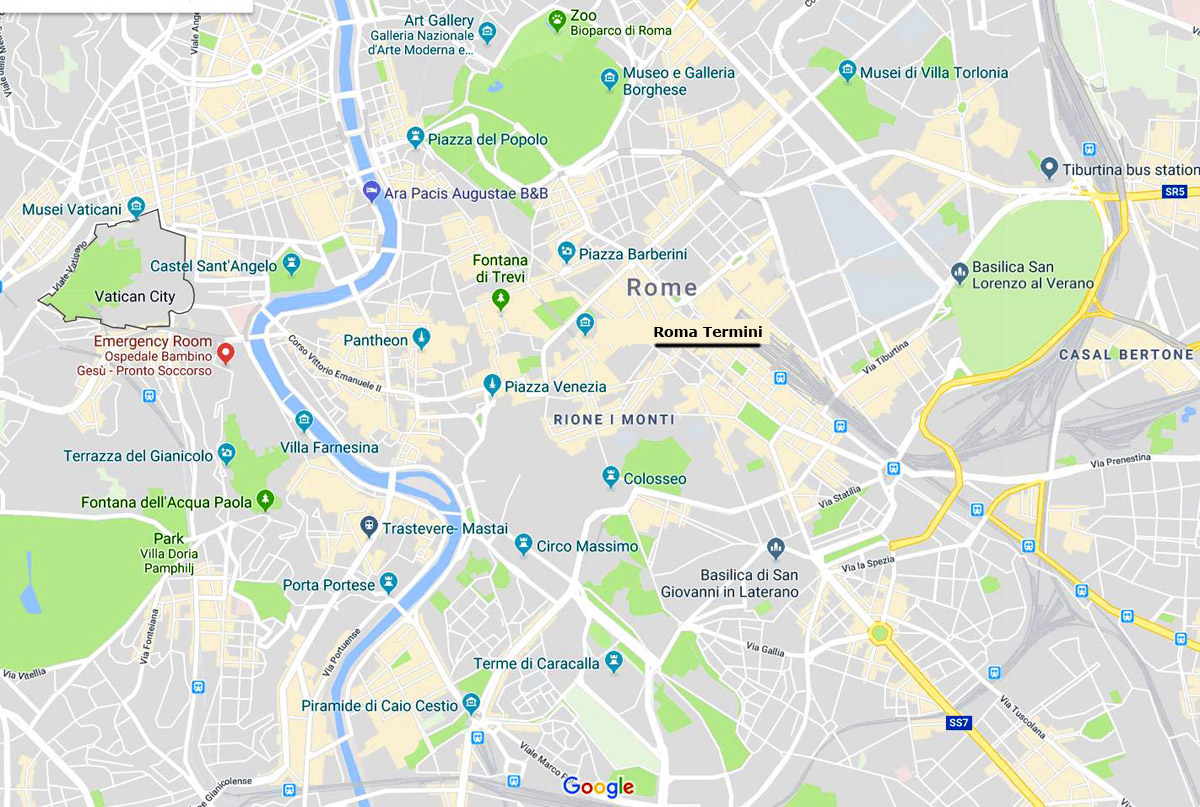 |
|||
| In the map above we can see Father Tiber zig-zagging in blue.
In this first page of photos, I will concentrate on the Tiber itself and on the sites to the West of the river. These include the Vatican City, with Saint Peter's Cathedral and the Vatican Museums; the Castel Sant'Angelo, and the Trastevere District near the Isola Tiberina (which you can see just above the letters "Trastevere-Mastai"). On page 2 we will visit the best sites East of the Tiber, in a circle around Roma Termini, the main railway station of Rome. |
|||
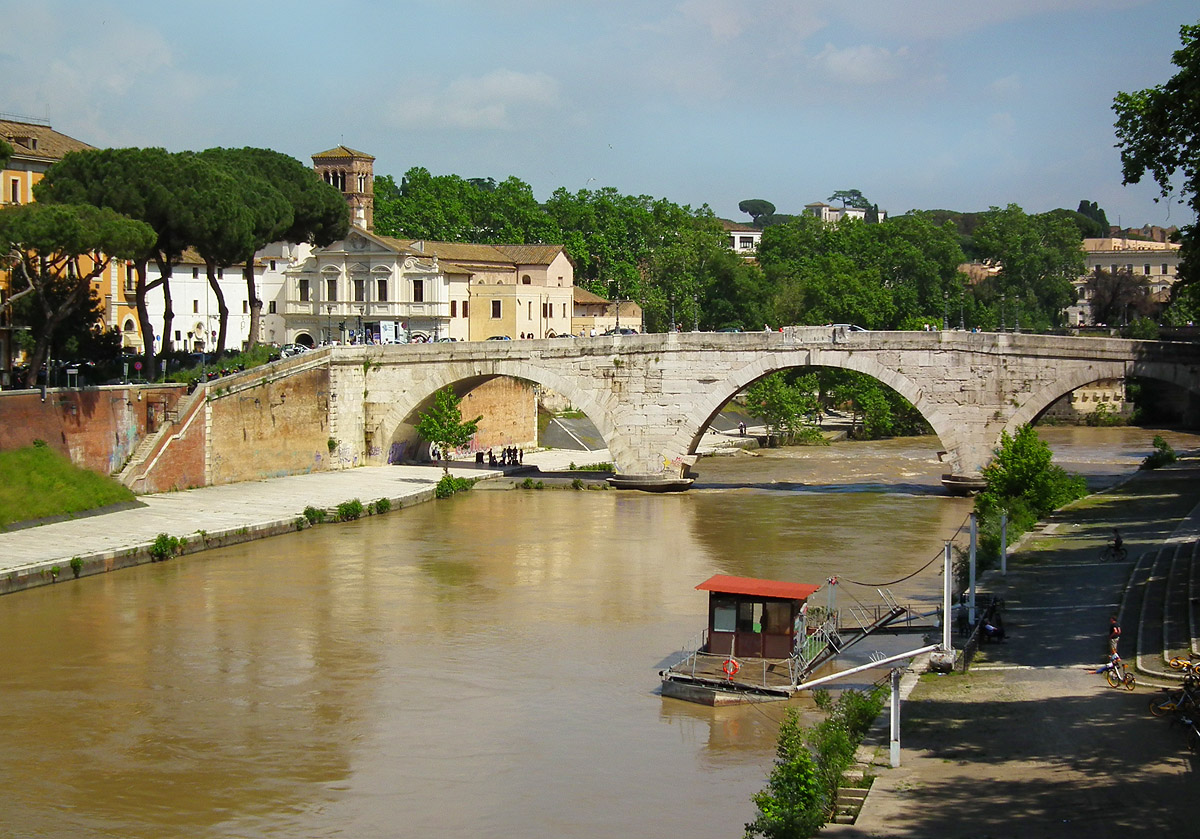 |
|||
| On the left of this photo we see the Isola Tiberina, the only island on the Tiber within the city of Rome.
In this photo we are facing South. |
|||
 |
|||
| A street in the Trastevere District just to the West of the Isola Tiberina on the Tiber. This district really coomes alive at night when the local restaurants are packed with locals and visitors alike.
You can get here by bus from Roma Termini, or catch a tram from Piazza Venezia. |
|||
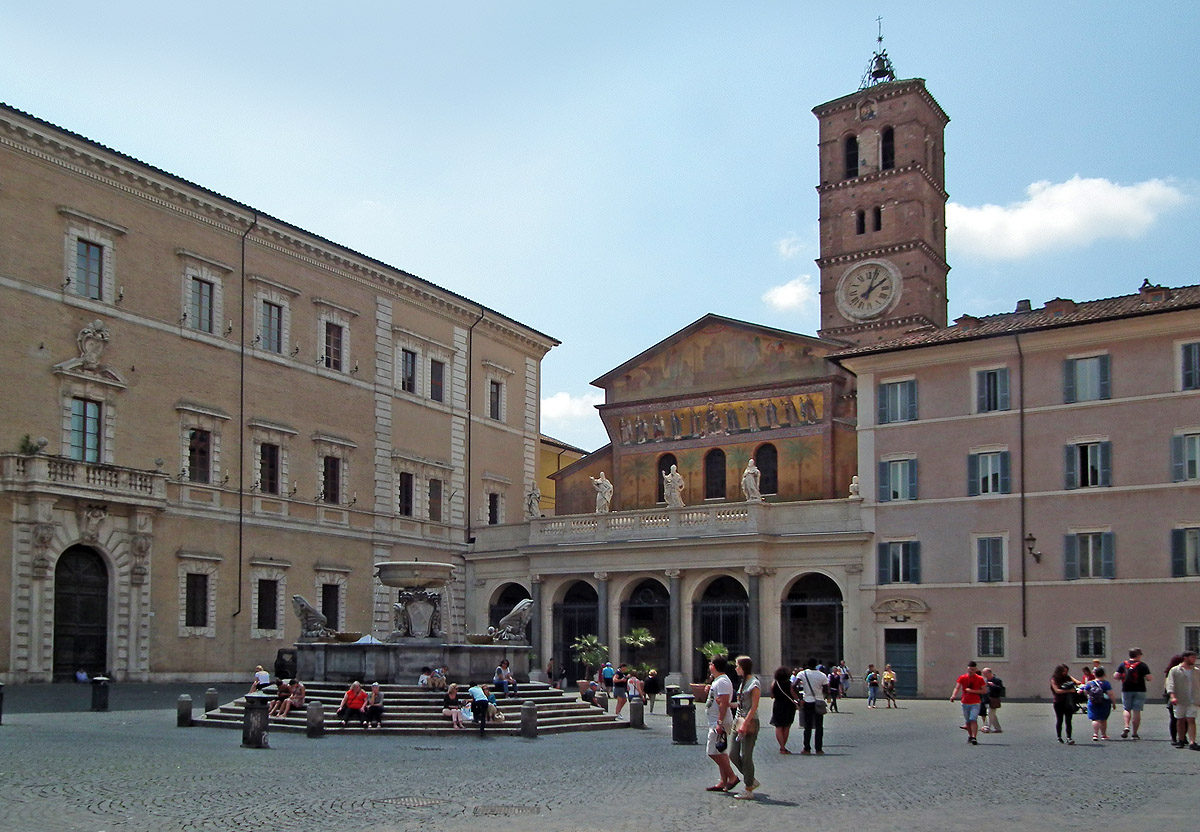 |
|||
| This is the Basilica di Santa Maria in Trastevere. It is the Piazza di Santa Maria. | |||
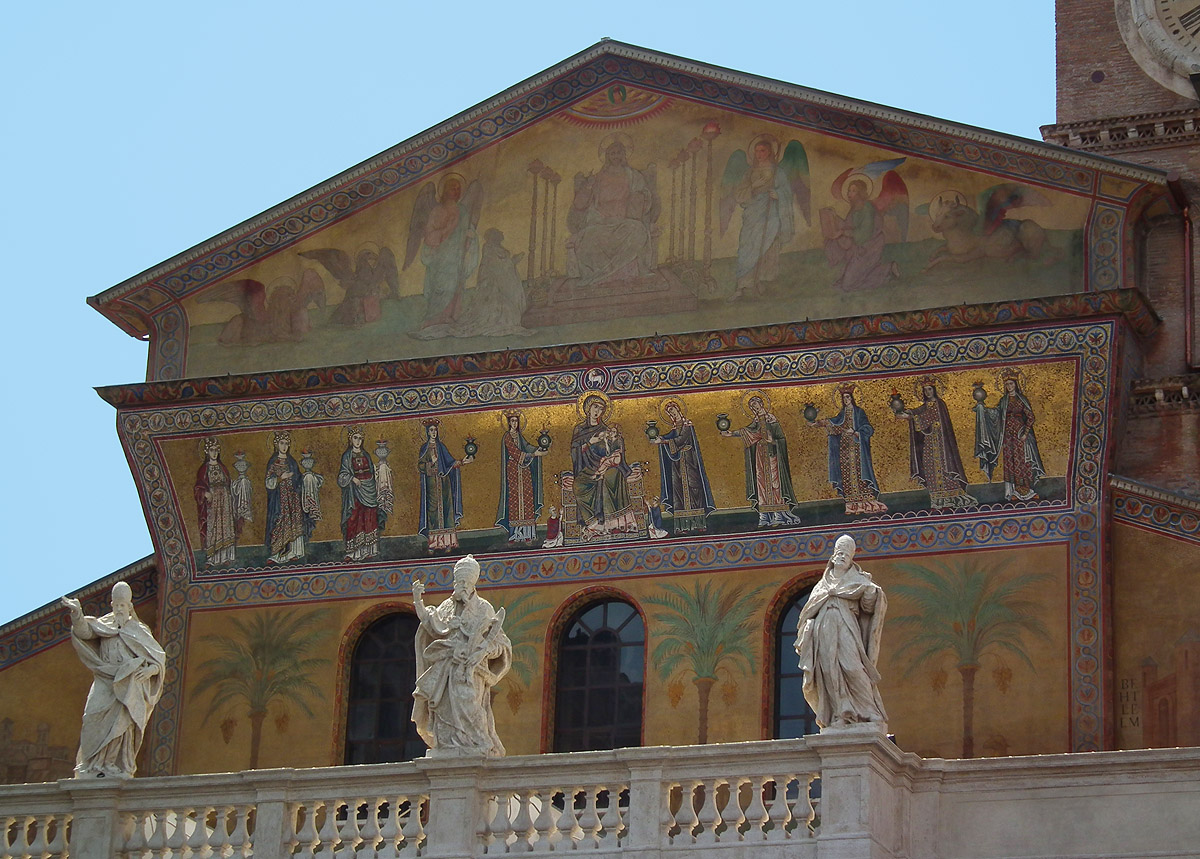 |
|||
| The facade of the Basilica. | |||
 |
|||
| A detail of the facade with Madonna and suckling Child. Note the two tiny men kneeling before her in prayer. In Byzantine art, size denotes religious importance. | |||
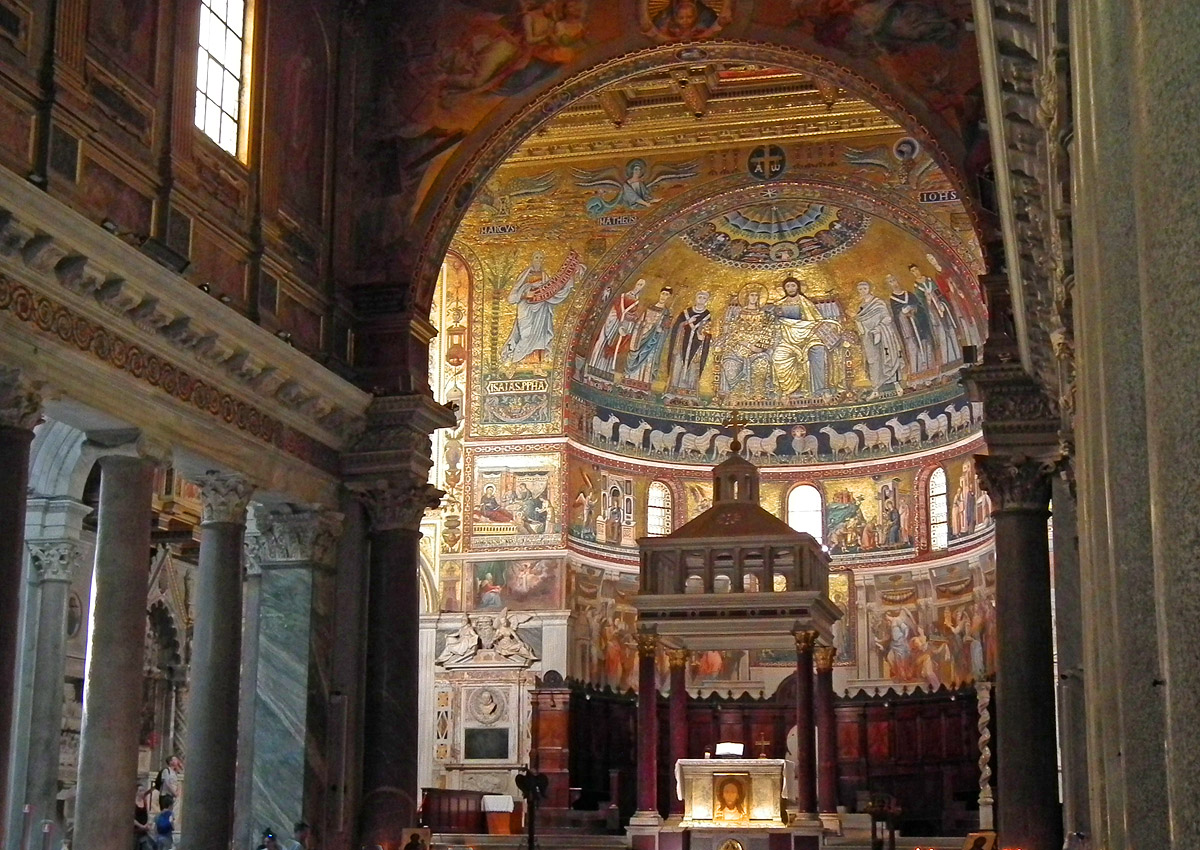 |
|||
| The Nave and Apse of the Basilica di Santa Maria. | |||
 |
||
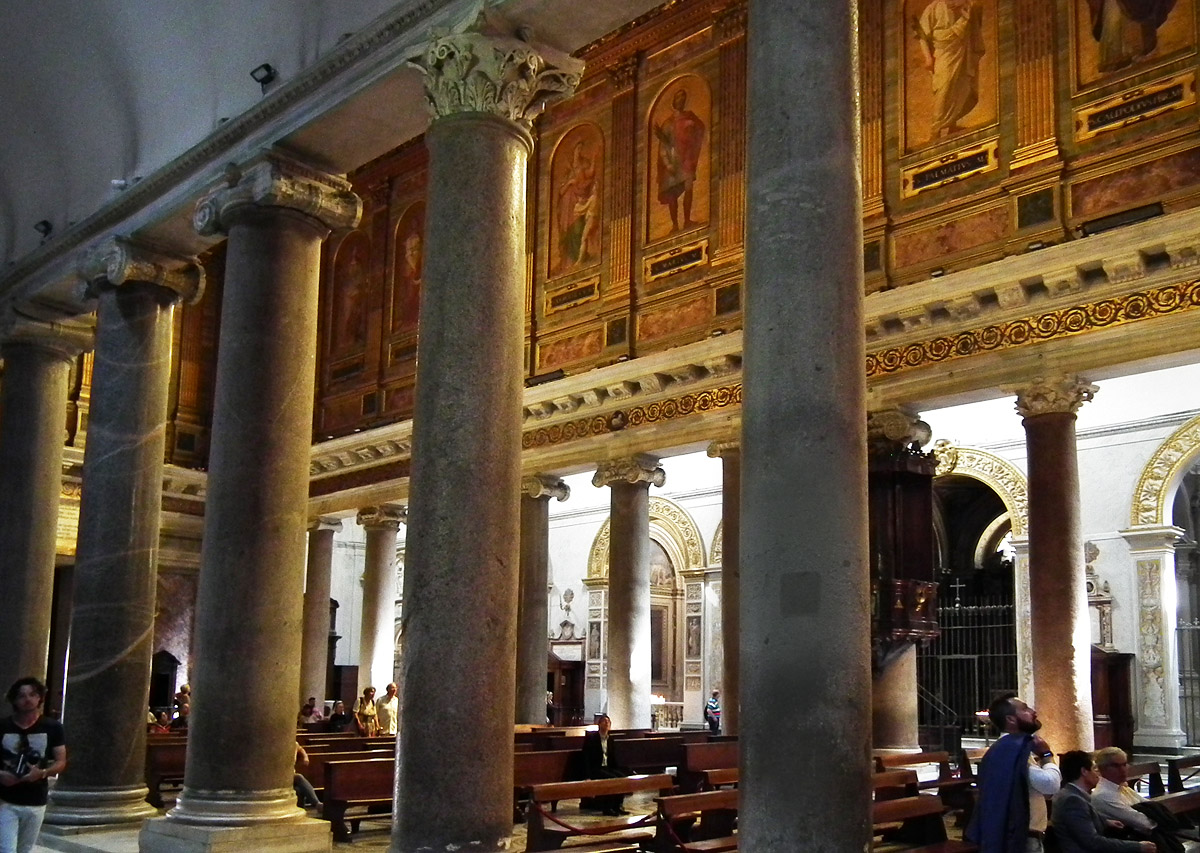 |
|||
| In this image, looking towards the entrance of the Basilica, we can see the Nave and the two Aisles spearated by Ionic columns. | |||
 |
|||
| The Annunciation. | |||
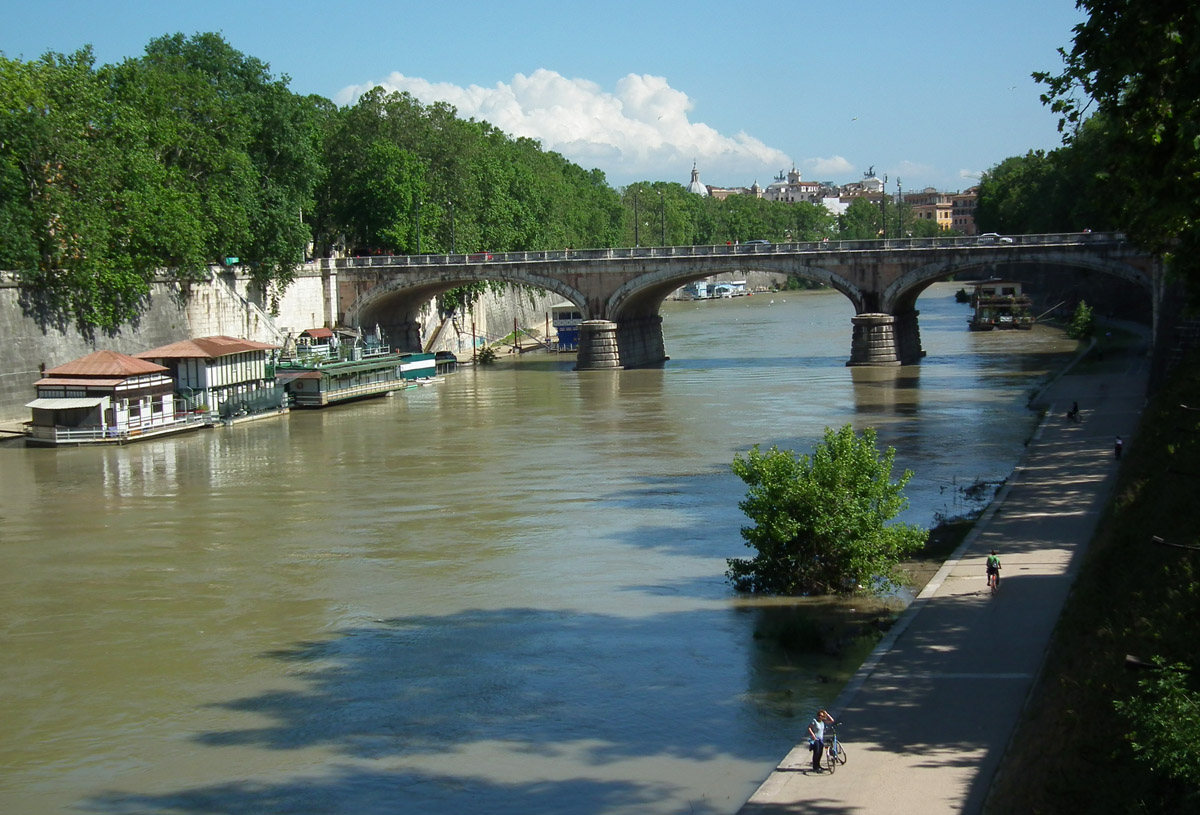 |
|||
| We are back on the banks of the River Tiber, this time to the North of the Vatican City and the Castello Sant'Angelo. In this photo we are facing South. | |||
 |
|||
| Sreet stalls on the embankment of the Tiber. | |||
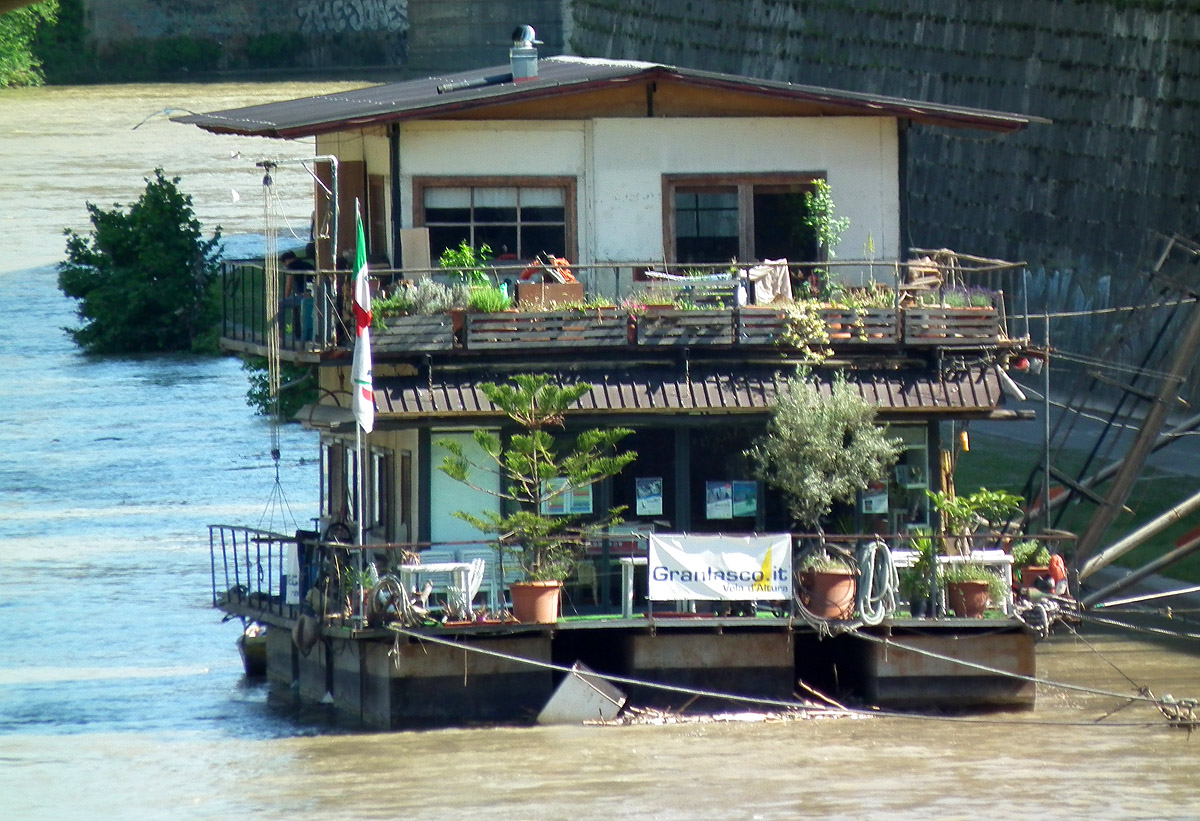 |
|||
| A house floating on the Tiber.
I took a photo of this same house barge nine years ago and I notice that it has since become a floating garden. |
|||
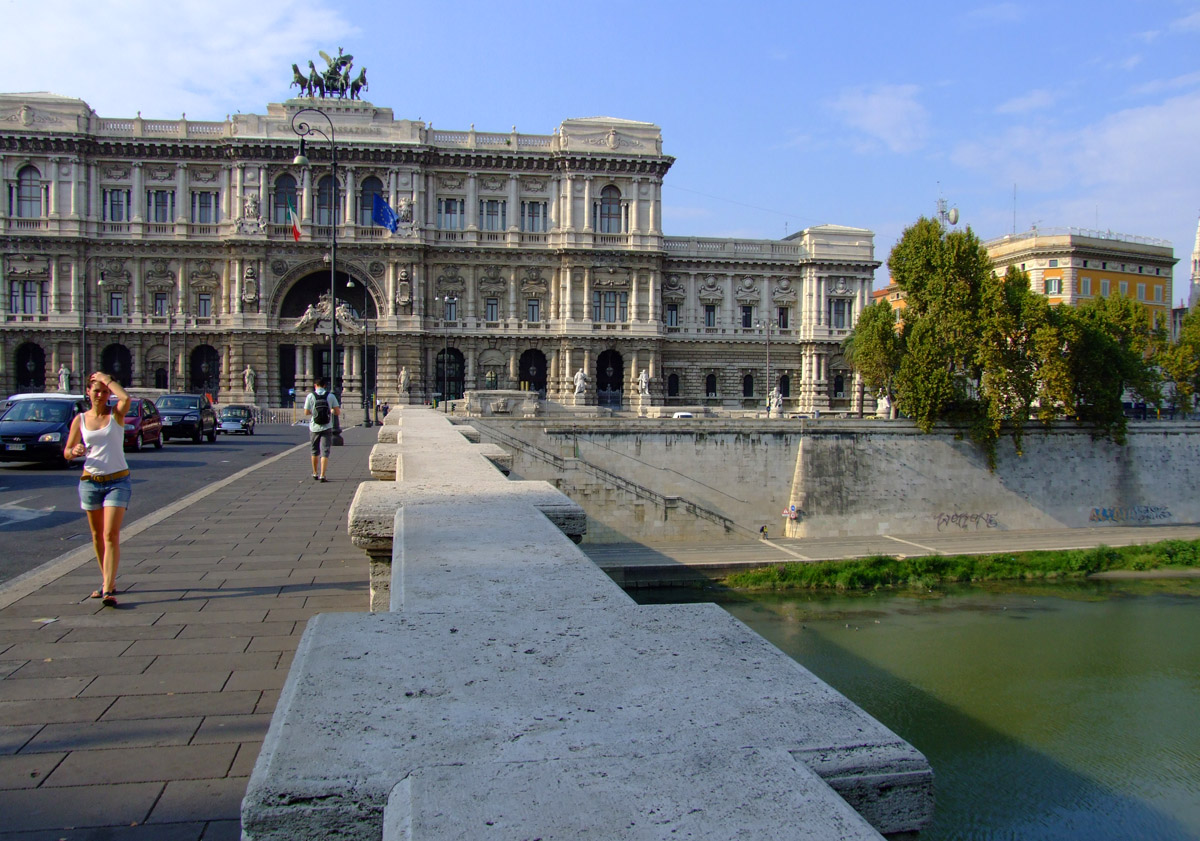 |
|||
| This is the Corte Suprema di Cassazione (the Supreme Court of Cassation), taken from the Ponte Umberto I. It is the highest court of appeal, or the court of last resort in Italy.
The building itself is the Palace of Justice, Rome. (This photo was actually taken in 2009. I took over 2000 photos of Rome on that particular trip and have only published a few them before. The Palace of Justice hasn't changed much in that time.) |
|||
 |
|||
| This equestrian sculpture sits atop the Palace of Justice. | |||
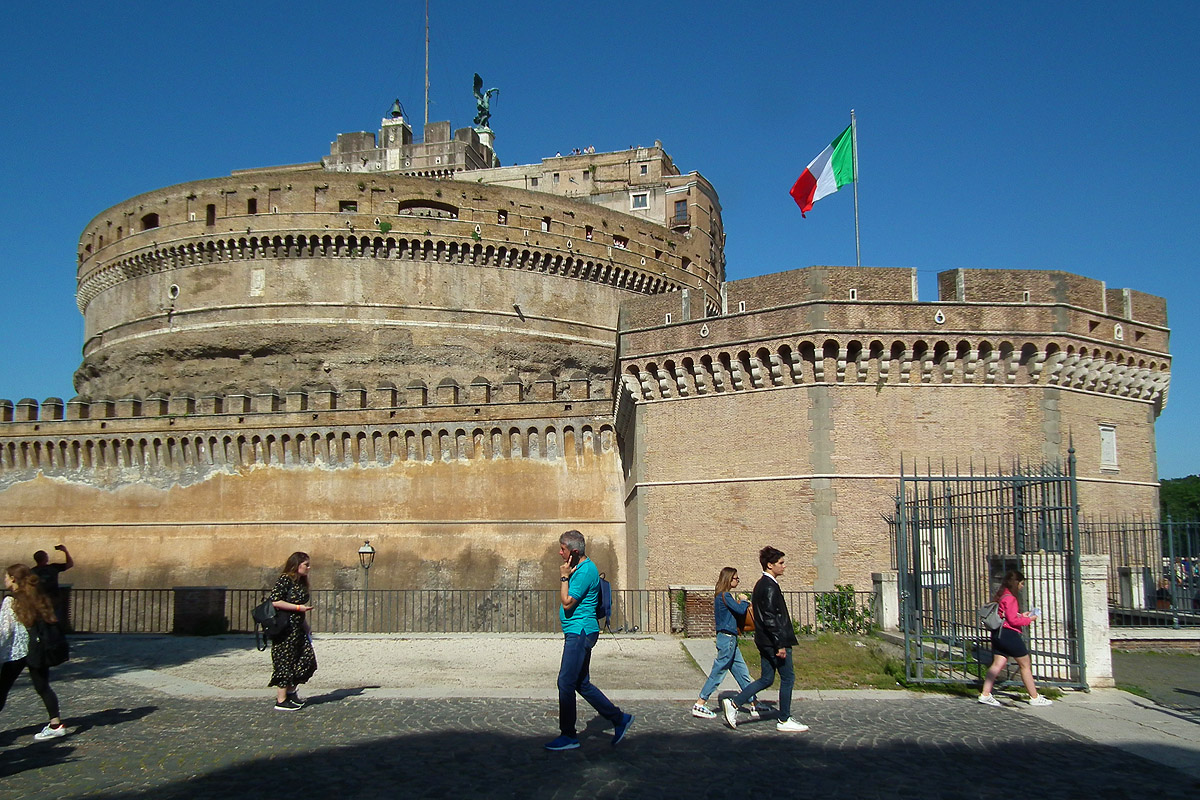 |
|||
| The Castel Sant'Angelo was first built as a tomb for the Roman Emperor Hadrian, between 134 and 139 AD. It was originally just the cylinder above and was richly decorated. The rough bits of the walls on the lower section of the cylinder indicate that the Pagan Roman decorations were later removed with some vehemence, perhaps when it was converted into a Christian Church.
The fortifications around the cylinder were erected in 401 AD when the area was converted into a military fortress. |
|||
 |
|||
| The Castel Sant'Angelo is now a museum. In this photo we can see stone cannon balls and a machine for flinging them at the enemy. | |||
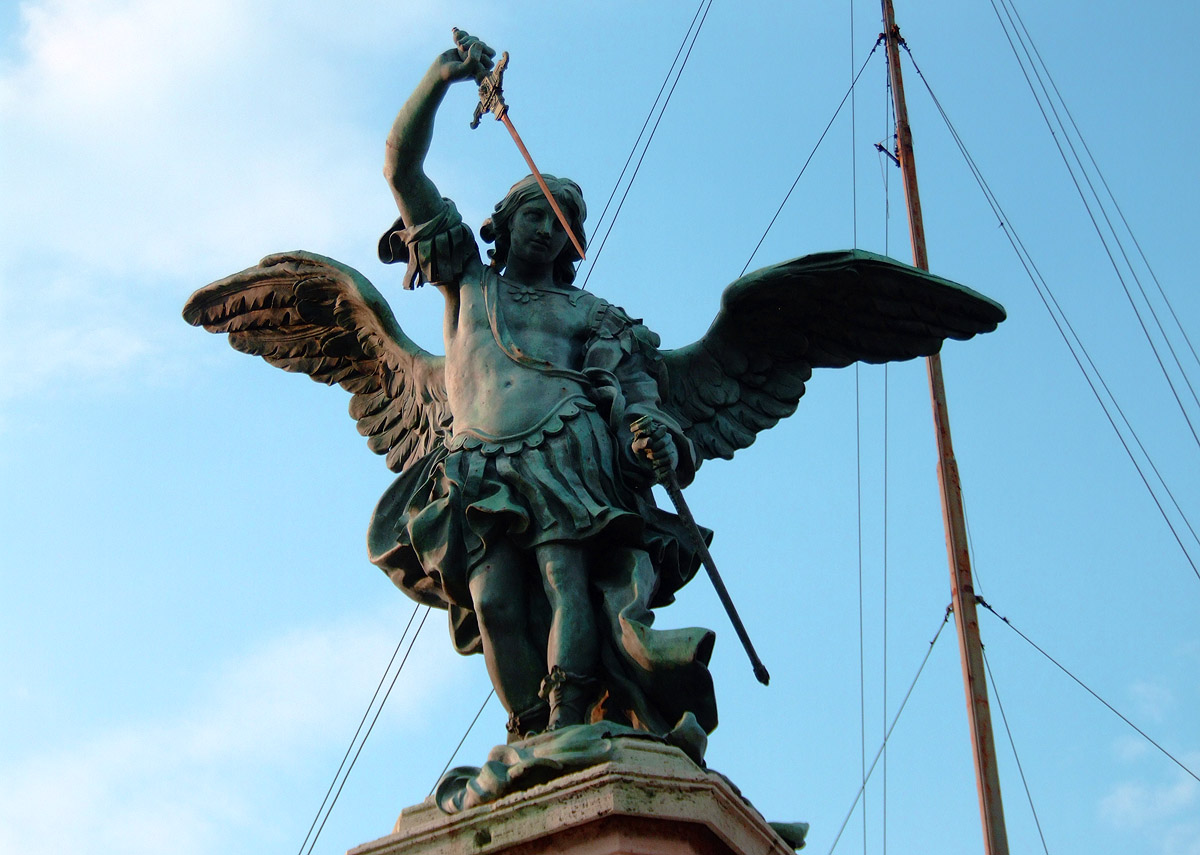 |
|||
| This bronze statue of the Archangel Michael was placed at the top of the Castel in 1753. It replaced an original marble statue placed there in 590 AD to commemorate the saving of Rome from the Plague. | |||
 |
|||
| The St Angelo Bridge was built by the Roman Emperor Hadrian, and it has since acquired a number of Baroque angels. | |||
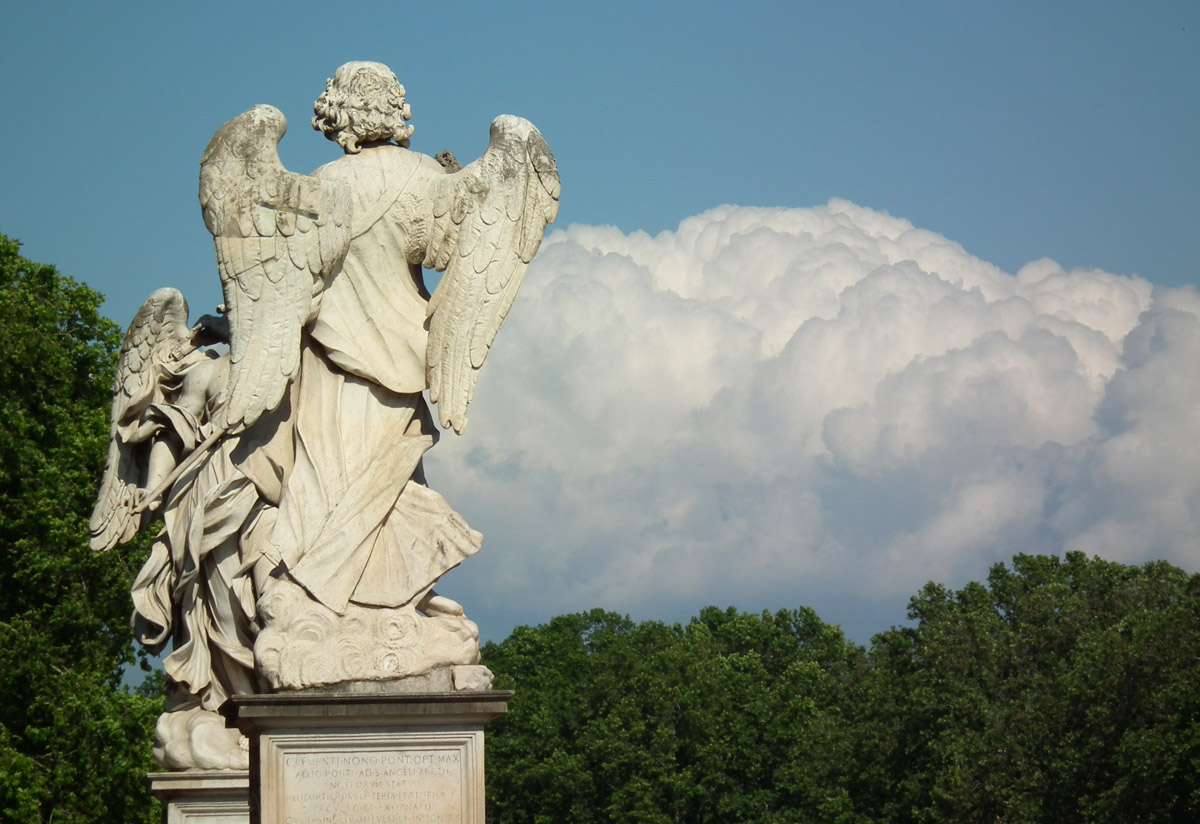 |
||
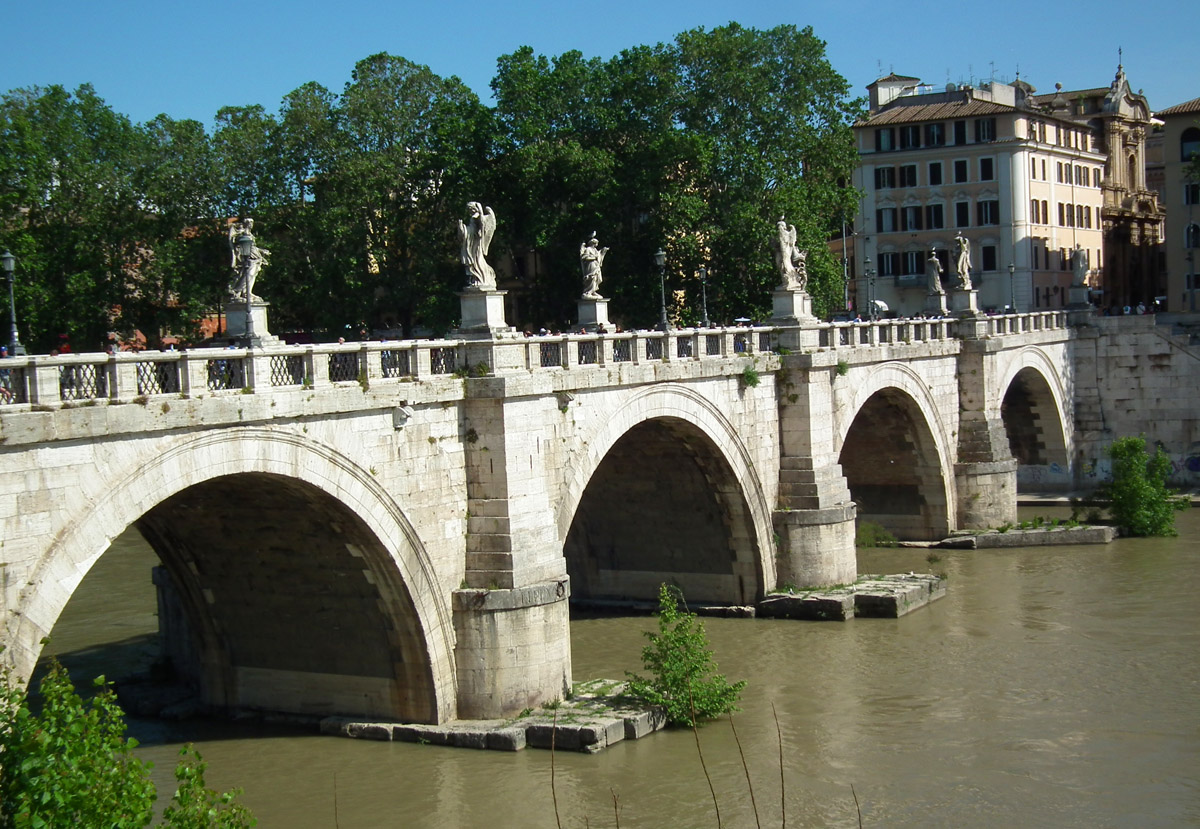 |
|||
| The Saint Angelo Bridge, looking towards the East. | |||
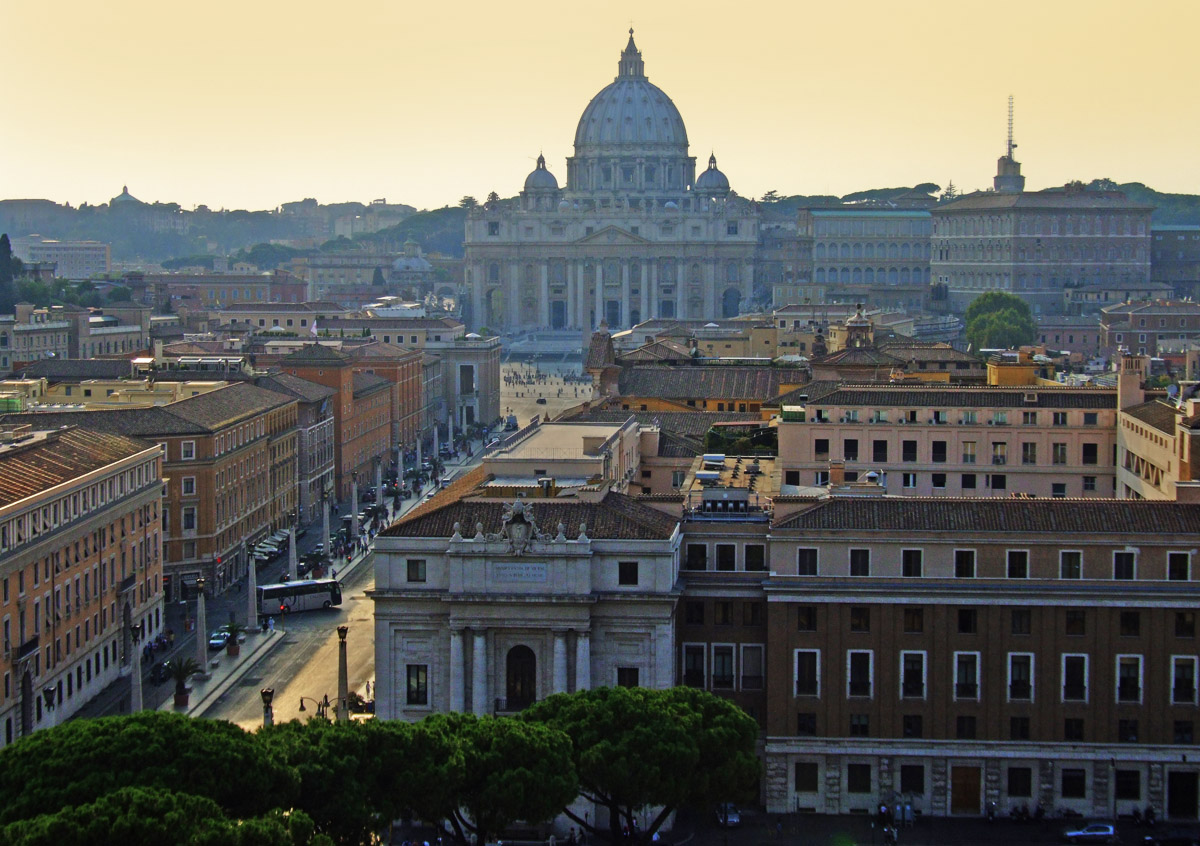 |
|||
| This photo of Saint Peter's Basilica was taken at sunset in 2009 from the top of the Castel Sant'Angelo. The views from the Castel are worth the price of admission to the museum on their own! | |||
 |
||||||
| Saint Peter's Basilica is within the Vatican City State.
This "City within a City", or "State within a State", came into existence in 1929, when the Italian Government, led by Benito Mussolini, and the Catholic Church signed the Lateran Treaty. For more than a thousand years, until the 19th Century, the Popes were secular rulers of a large chunk of land in the centre of what we now call Italy. After Garibaldi led the movement to unify Italy, and after some resistance by the Papal Forces, the Popes finally lost control of all their Papal States and were virtually confined within the walls of the Vatican, until the Lateran Treaty was signed in 1929. The modern Catholic Church now concentrates solely on spiritual matters. |
The map on the right shows the Papal States on the Italian Mainland in 1796. |  |
||||
 |
|||
| Saint Peter's Basilica was designed by a group of the brightest and best minds of the Italian Renaissance. They included Donato Bramante, Michelangelo, Raphael, Carlo Maderno and Bernini.
The facade was designed by Maderno and completed in 1612. The massive dome was first designed by Bramante and then redesigned by Michelangelo. The present building replaced a much older Basilica which was constructed on this site in about 400 AD. |
|||
 |
|||
| This model of Saint Peter's and the Vatican City is in the Vatican Museum. (Actually, I took this photo in 2009, and I hope that the model in question is still on view there!) | |||
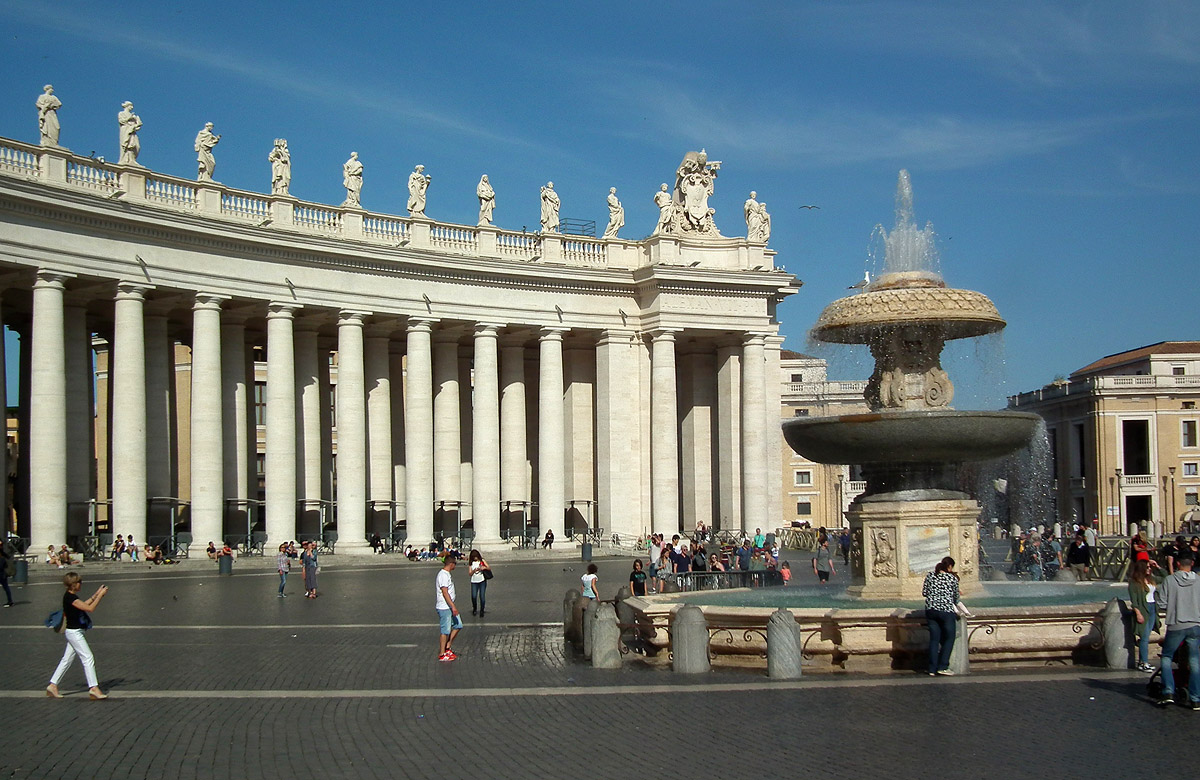 |
|||
| The Piazza San Pietro. | |||
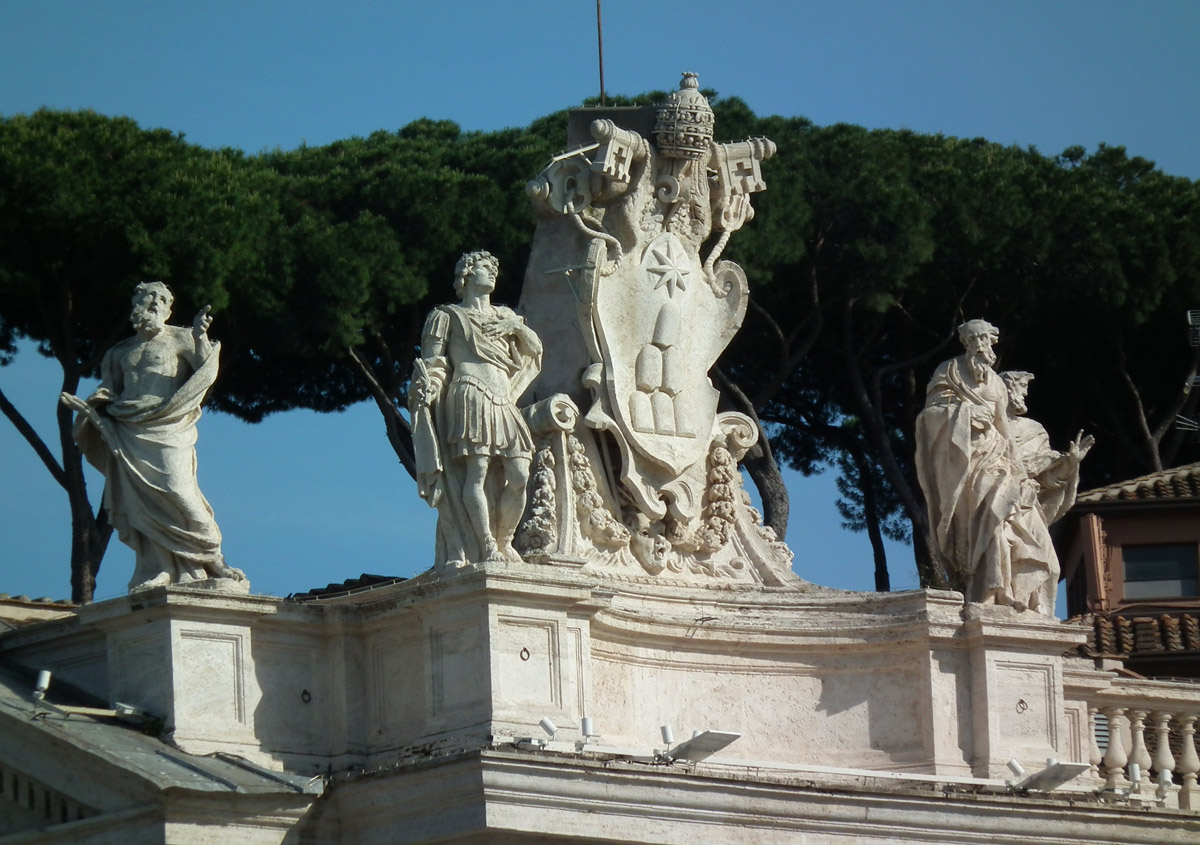 |
|||
| Statues atop the columns surrounding the Piazza San Pietro. | |||
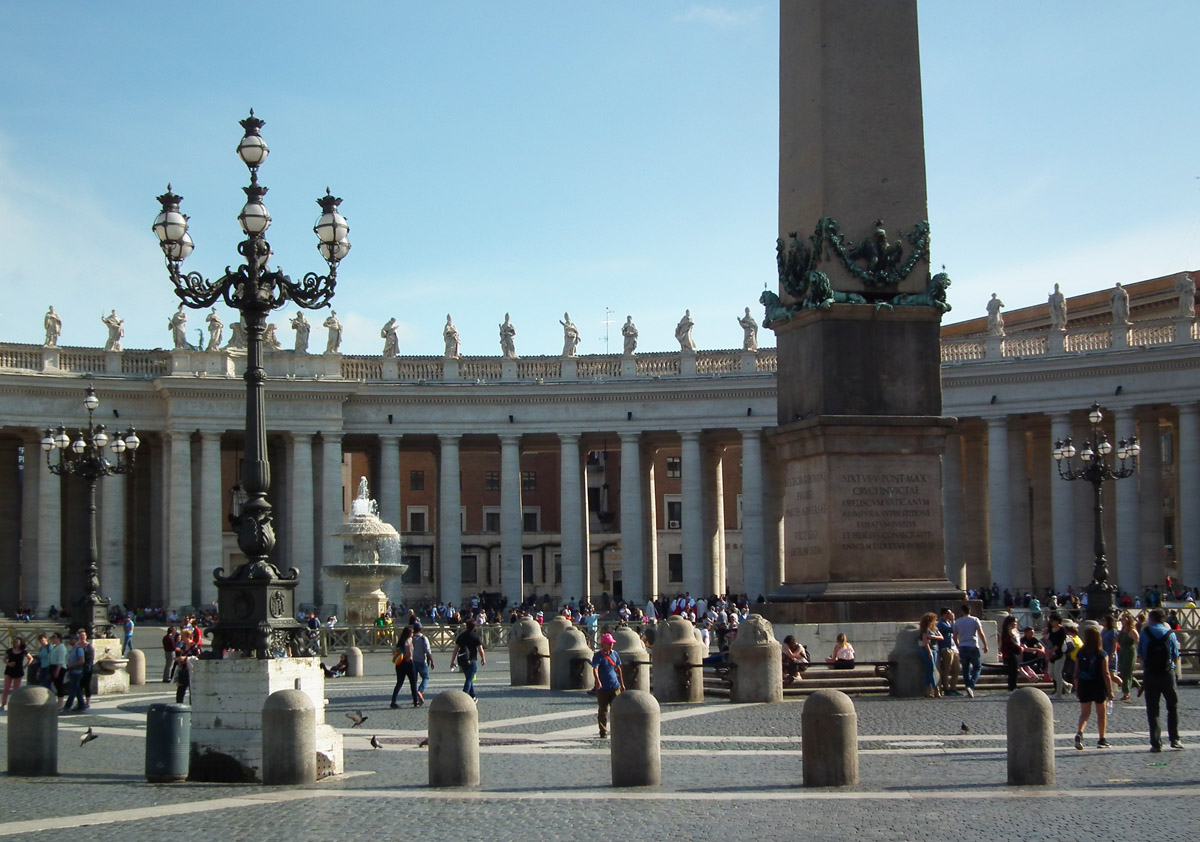 |
||
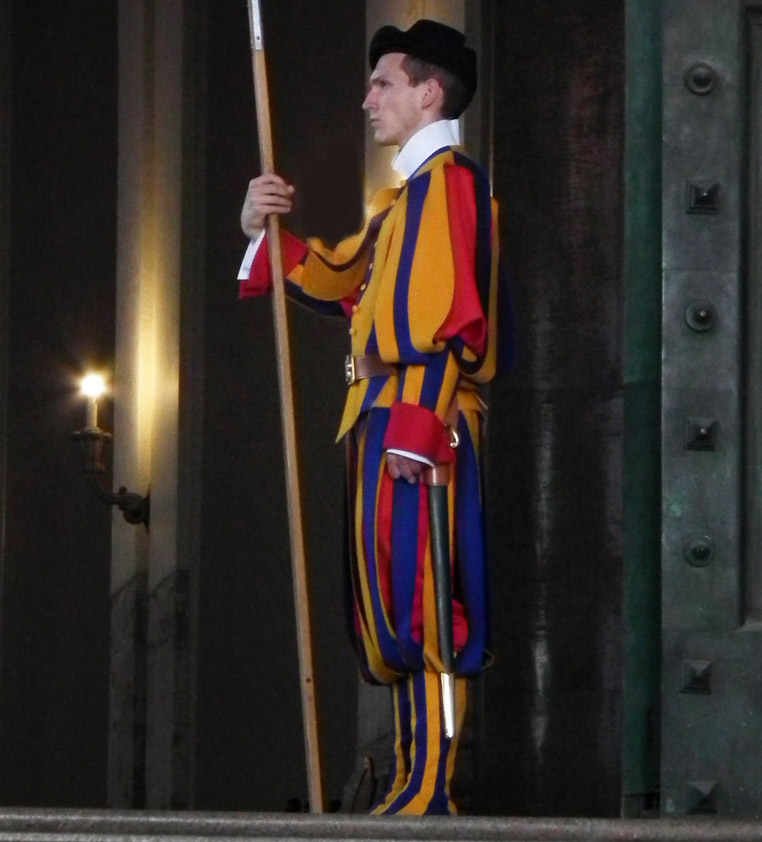 |
||||
| The Pontifical Swiss Guards were first formed in 1506 by Pope Julius II. Their mission was to protect the Pope and provide security for the Apostolic Palace. They are equipped with both traditional and modern weapons.
Since the attempted assassination of Pope John Paul II in 1981, they have been trained in unarmed combat and the use of small arms. Recruits to the guards must be unmarried Swiss Catholics between the ages of 19 and 30, and they must have completed basic military training in the Swiss Armed Forces. |
||||
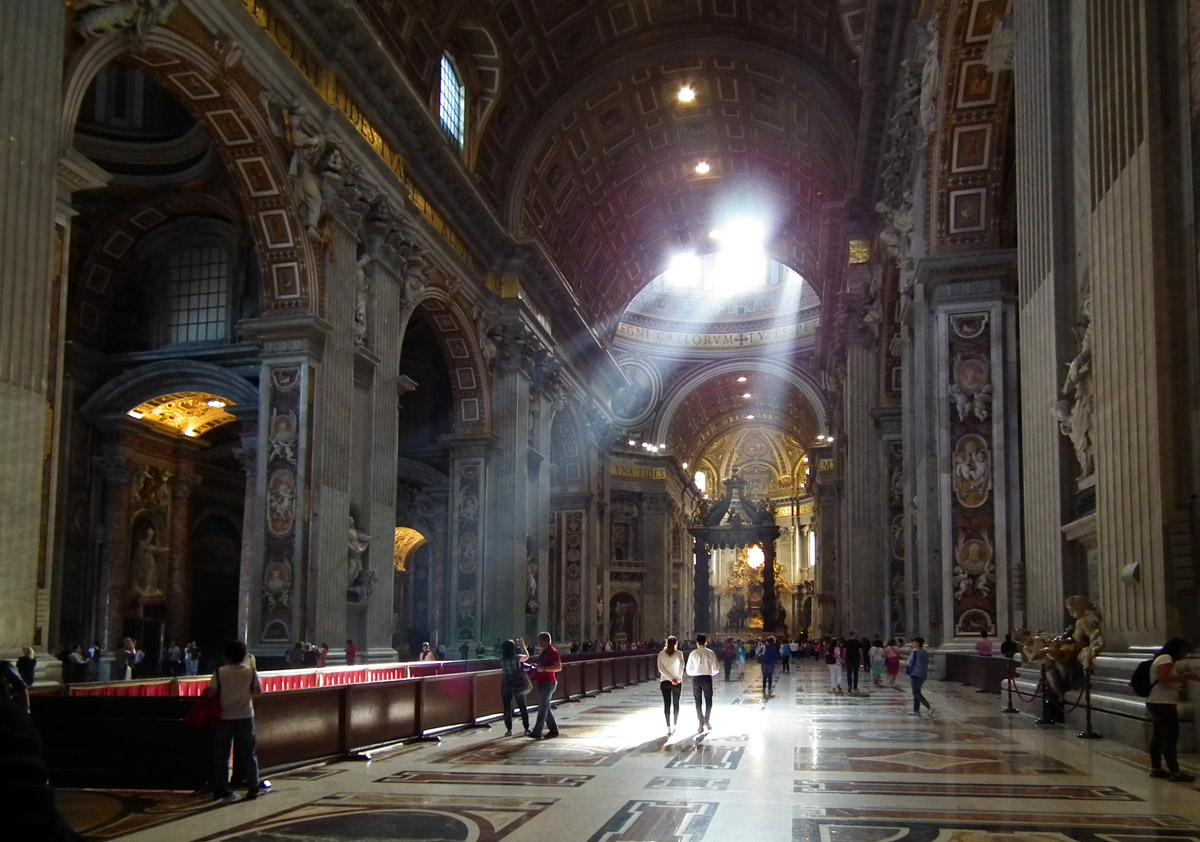 |
|||
| The Nave of Saint Peter's Basilica. | |||
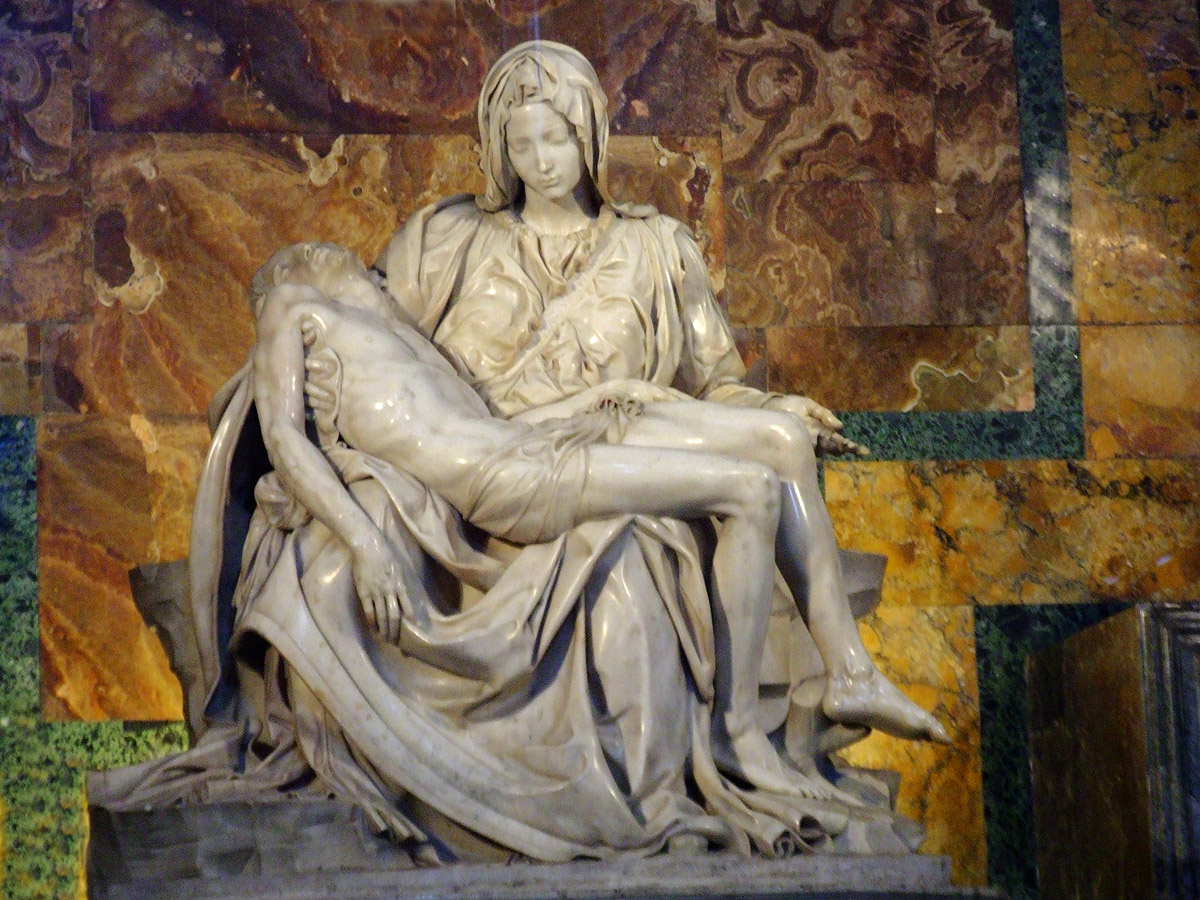 |
|||
| This poignant marble statue by Michelangelo shows a surprisingly young Madonna holding the adult body of her crucified Son.
It is a prefiguration, employing the familiar subject of the Madonna and Child. |
|||
 |
|||
| This is the interior of the small dome in the Basilica. | |||
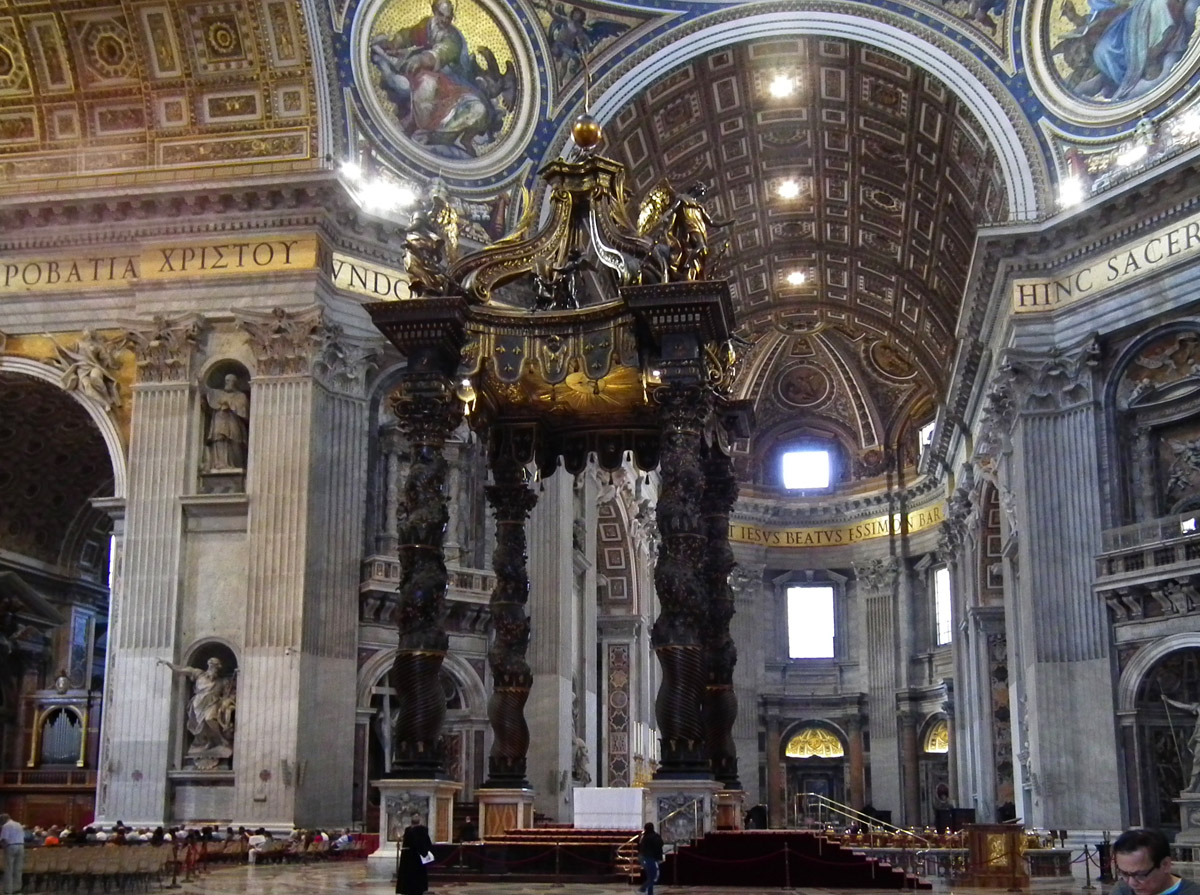 |
|||
| St. Peter's Baldachin is a huge Baroque bronze sculpted canopy designed by Bernini. It stands at the centre of the crossing, under the main dome of the Basilica.
It was supposed to sit over the tomb of Saint Peter, who was said to have been crucified upside down in Rome during the reign of the Emperor Nero. |
|||
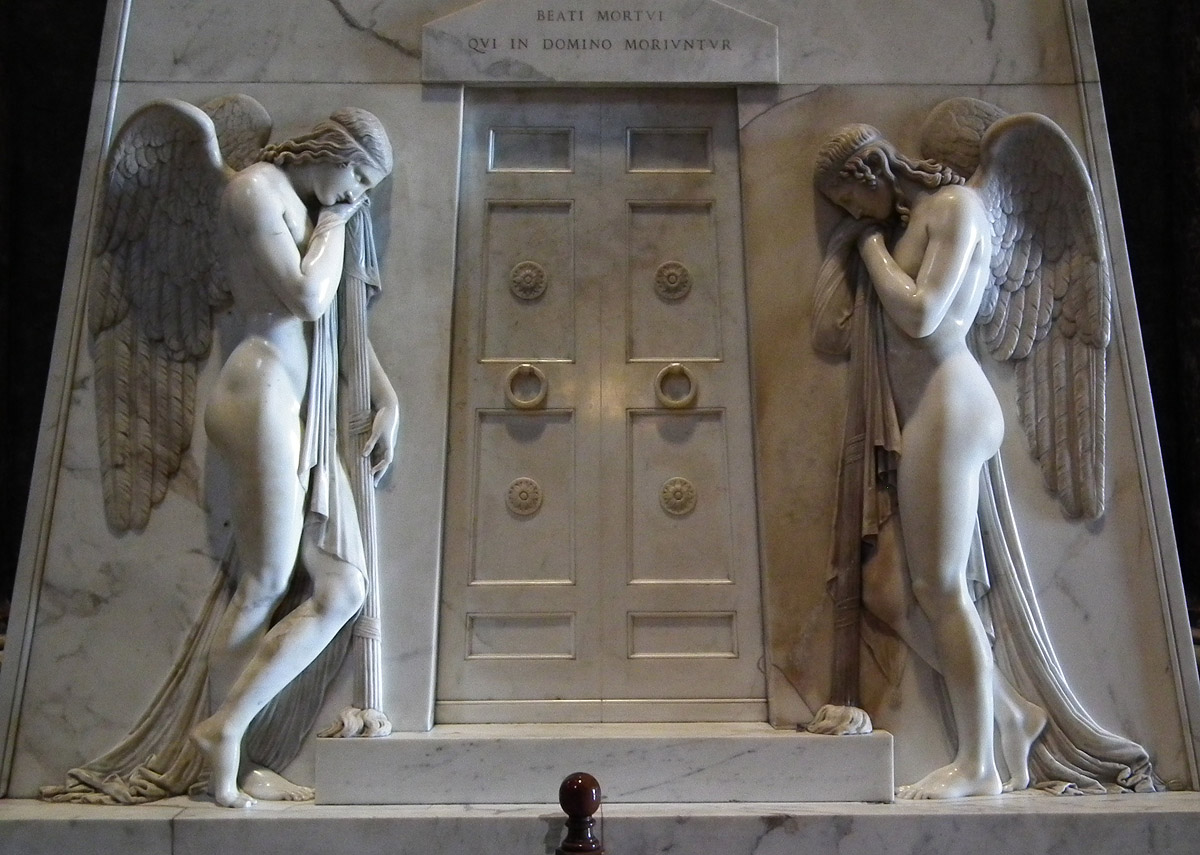 |
||
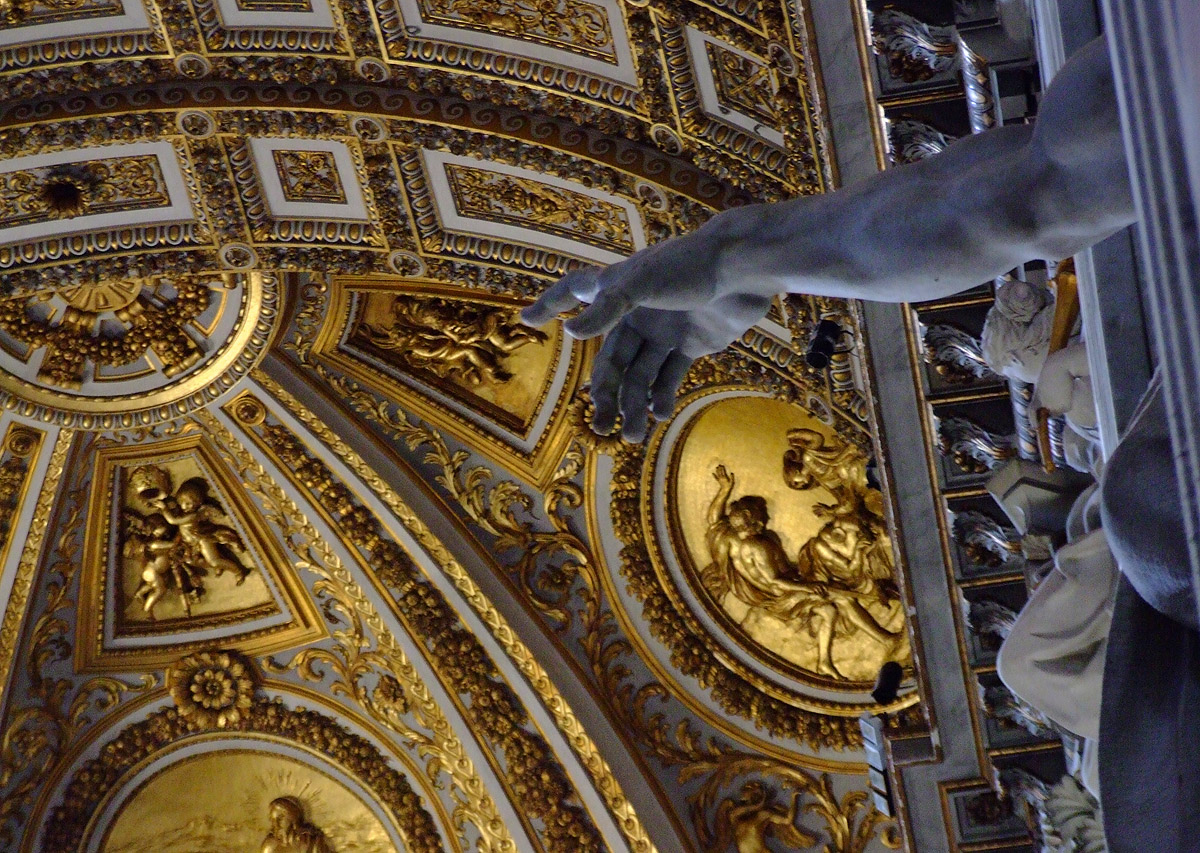 |
|||
| A sculpted finger points towards the ceiling of Saint Peter's. | |||
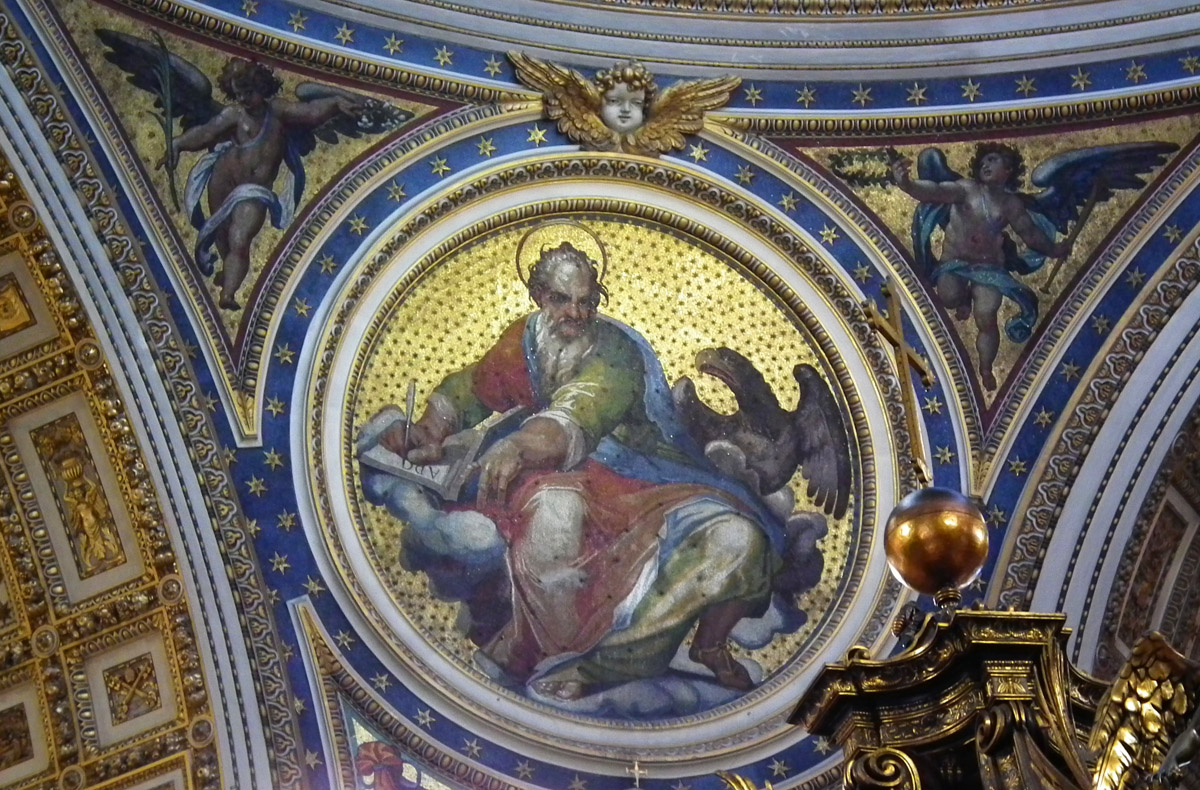 |
|||
| The eagle suggests that this is an image of the Evangelist John, one of the four Gospel writers. | |||
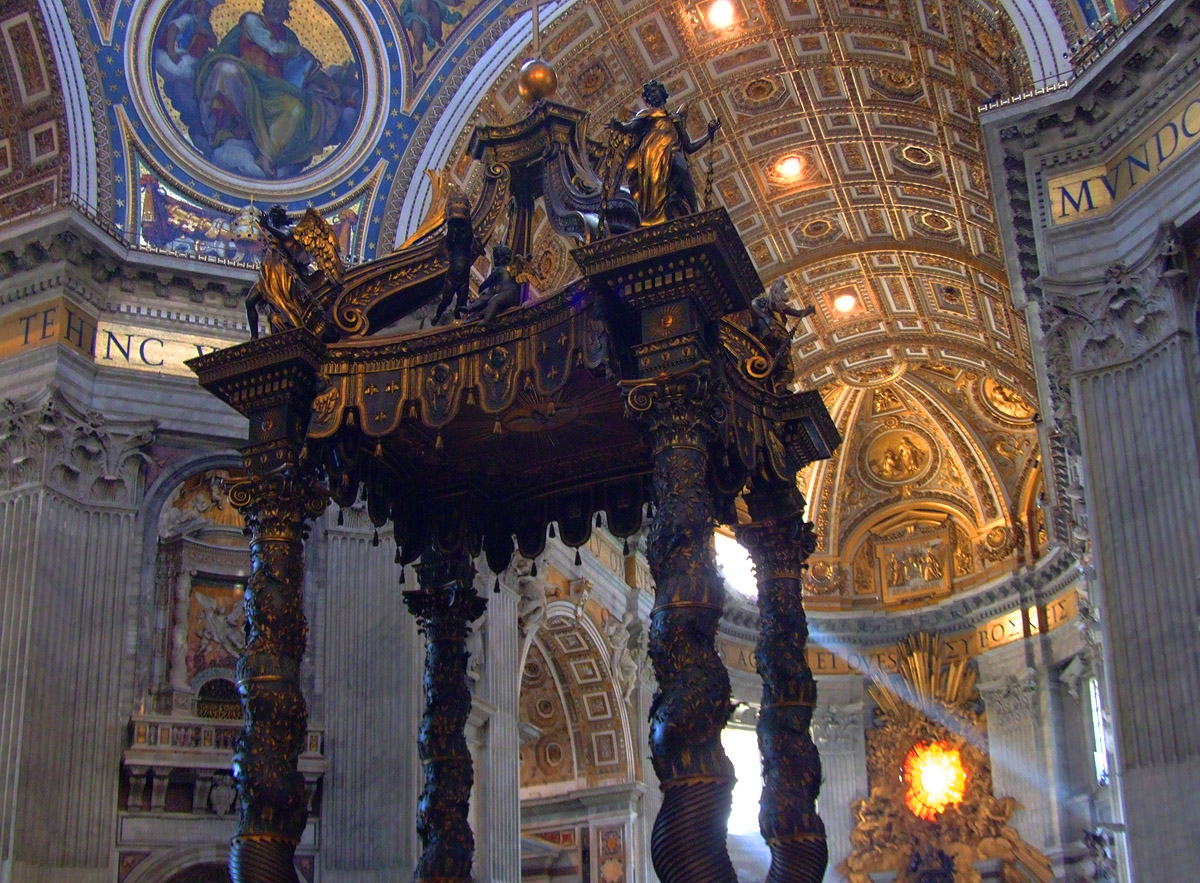 |
|||
| A closer view of Bernini's Baldachin. | |||
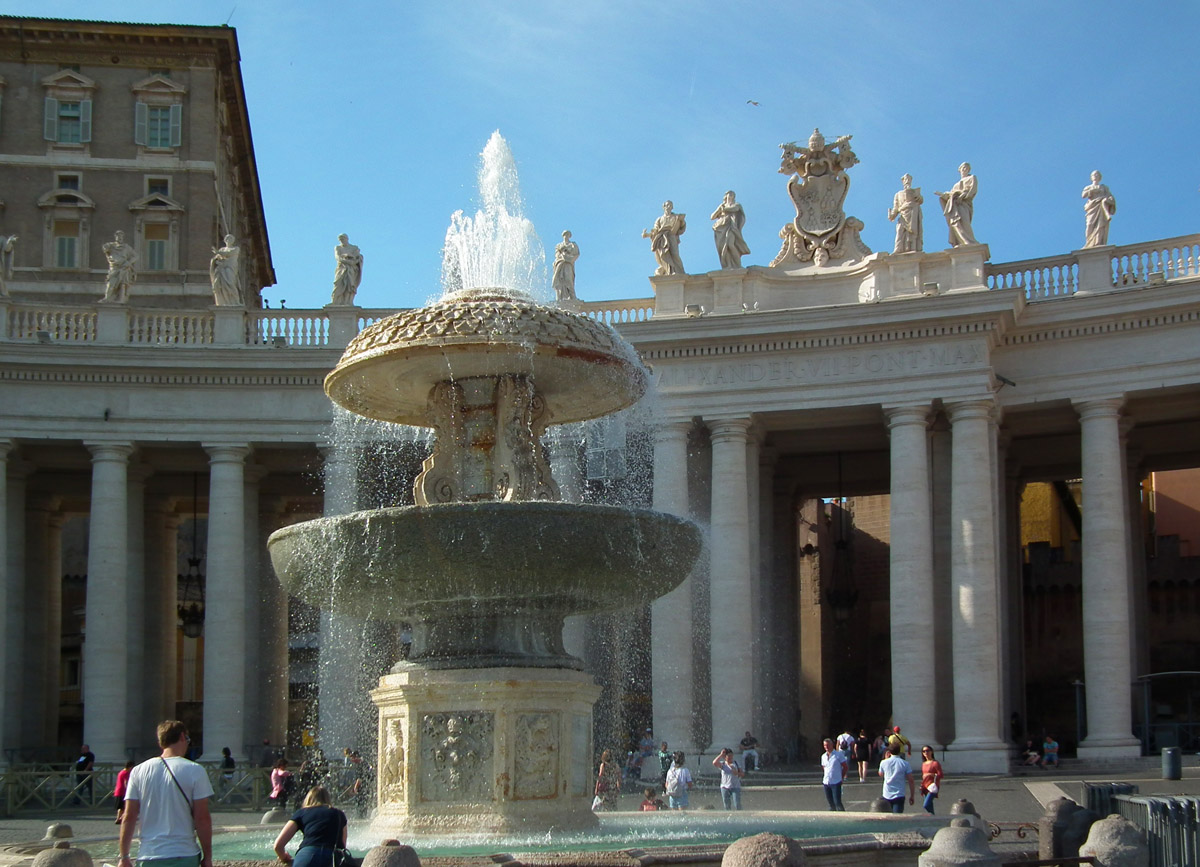 |
|||
| The fountain in the Piazza San Pietro. We now journey to the entrance of the Vatican Museum which is on the Northern side of Vatican City. | |||
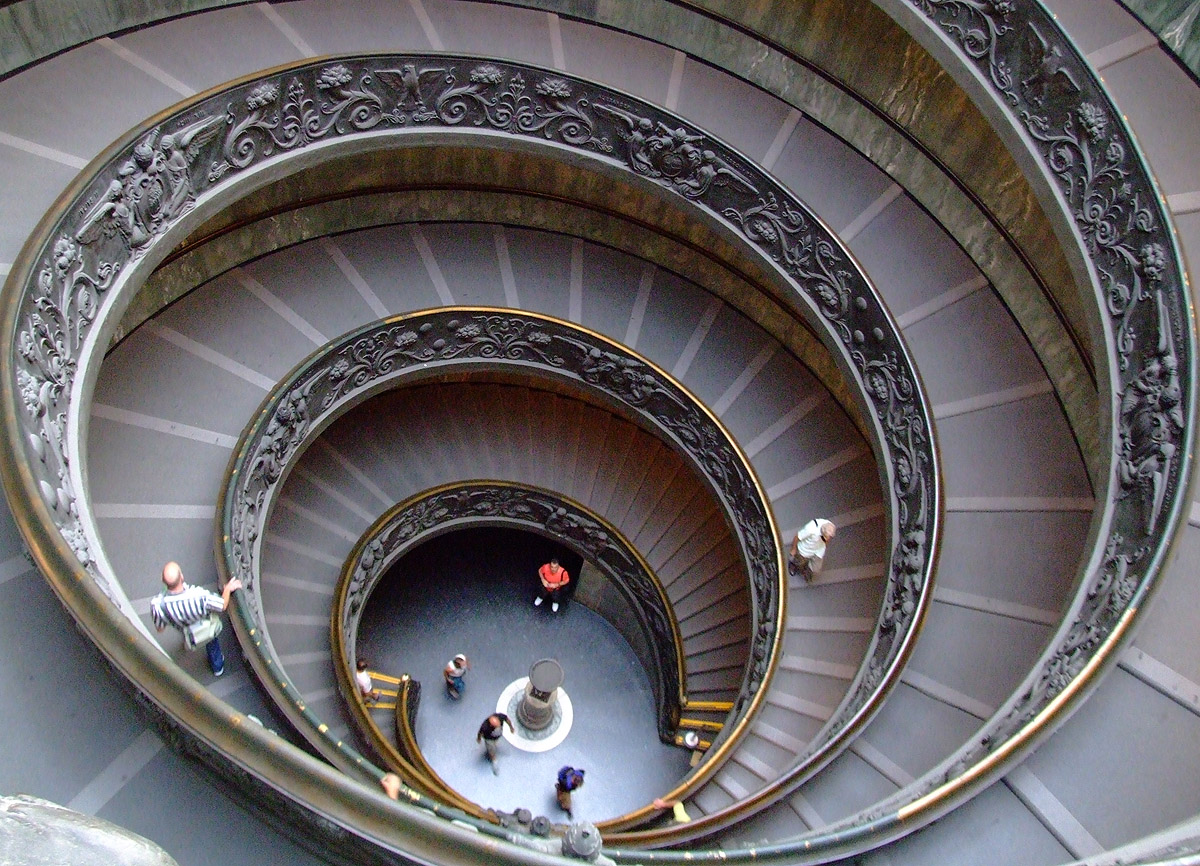 |
|||
| This is the double elliptical staircase of the Vatican Museum. On the trip to Italy in 2018, I concentrated on sites which I had not visited previously and I did not have the time to visit this great Museum then.
However, I stayed in a Convent "Hotel" right next to the Museum entrance in 2009, and I spent almost two whole days in the Vatican Museum itself. I haven't shown the following photos from the Museum publically since then. I trust that the images I am showing now are still relevant today! |
|||
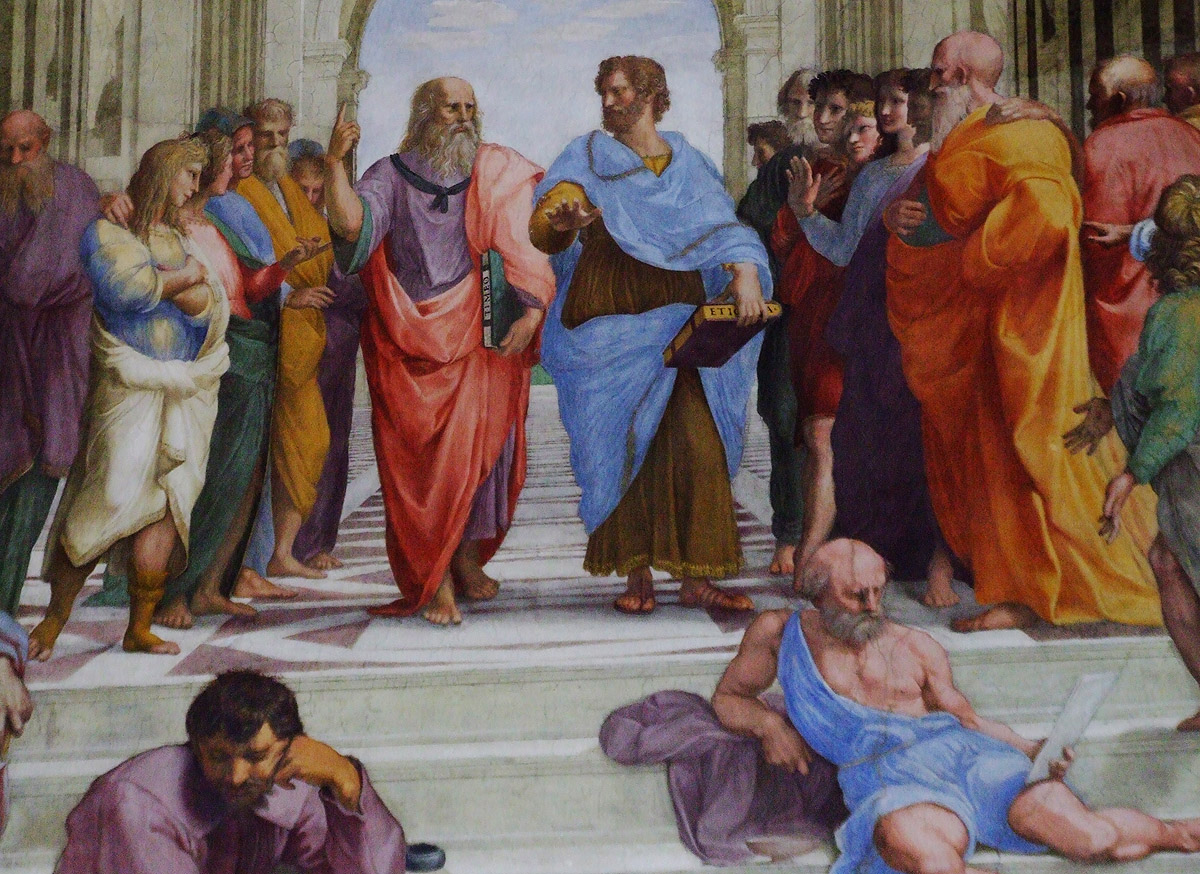 |
|||
| This is a detail of a large fresco by Raphael called "The School of Athens". It depicts the Greek Philosophers, Plato and Aristotle. The mural is just one work among several in a large room now called the Stanze di Raffaello. | |||
 |
|||
| IAnother detail of the School of Athens. I might be wrong but I believe that the central figure in white, looking at us, might just be a self-portrait by Raphael. | |||
 |
|||
| This large mural by Raphael is called "The Fire in the Borgo". The Borgo is an area between Saint Peter's Basilica and the River Tiber.
A fire broke out here in 847 and legend has it that Pope Leo IV contained it with his benediction. One can just make out the miracle-working Pope below the arch at the very top of the painting. |
|||
 |
|||||
| The "Last Judgement" by Michelangelo in the Sistine Chapel.
This subject was very popular in the Middle Ages. Byzantine Art at that time avoided the notion of "scientific perspective". When Islam was on the rise, it maintained the Jewish tradition of not depicting God or indeed all humans in art. By that time, Christianity had become largely Greek and Roman, and the Christians then were not too keen to abandon their use of the human figure in church decorations. Christianity was bitterly divided by the Iconoclastic Controversy. A compromise was reached whereby depictions of God and humans was permitted, but there would not be the use of the kind of perspective which had been invented by the Pagan Greeks. The images would be flat, and the relative size of figures would be determined by the religious importance of the persons depicted, rather than by their position in 3 dimensional space. God would be shown as the largest figure, and generally placed at the top of the image; followed by the Saints and Angels. The sinners being forced into hell would be depicted as the tiniest figures, usually at the bottom right of the painting or mosaic, at the left hand of God. |
What is fascinating about Michelangelo's "Last Judgement" is that he plays amusing games with the size and position of the figures.
On the one hand he pays homage to the Byzantine tradition so that the sinners at the bottom right of the painting are slightly smaller than the Judgemental Christ, even though they may be closer to the spectator. There is also a hint of "scientific perspective" in the figures floating behind Jesus. All the figures floating in the sky are conveniently standing on clouds, hinting at the notion of physical gravity. There are a couple of figures who are actually slightly larger than the Christ. Of course, the figures themselves are not flat, and are shown as 3 dimensional objects, with the kind of vigorous controposto which is the hallmark of Michelangelo's painting. The image of the Last Judgement is so powerful that we take for granted all the painterly contradictions inherent in the composition. |
||||
 |
|||
| Legend has it that the flayed skin held by the bearded man with the knife is a portrayal of Michelangelo himself.
Jesus Christ, the Judge of Last Resort, is depicted as a muscular and powerful figure. |
|||
 |
|||
| As the final trumpets blow, the demons are busy dragging the sinners down. | |||
 |
|||
| A snake is biting the private parts of the man on the extreme right of this image. Ouch! | |||
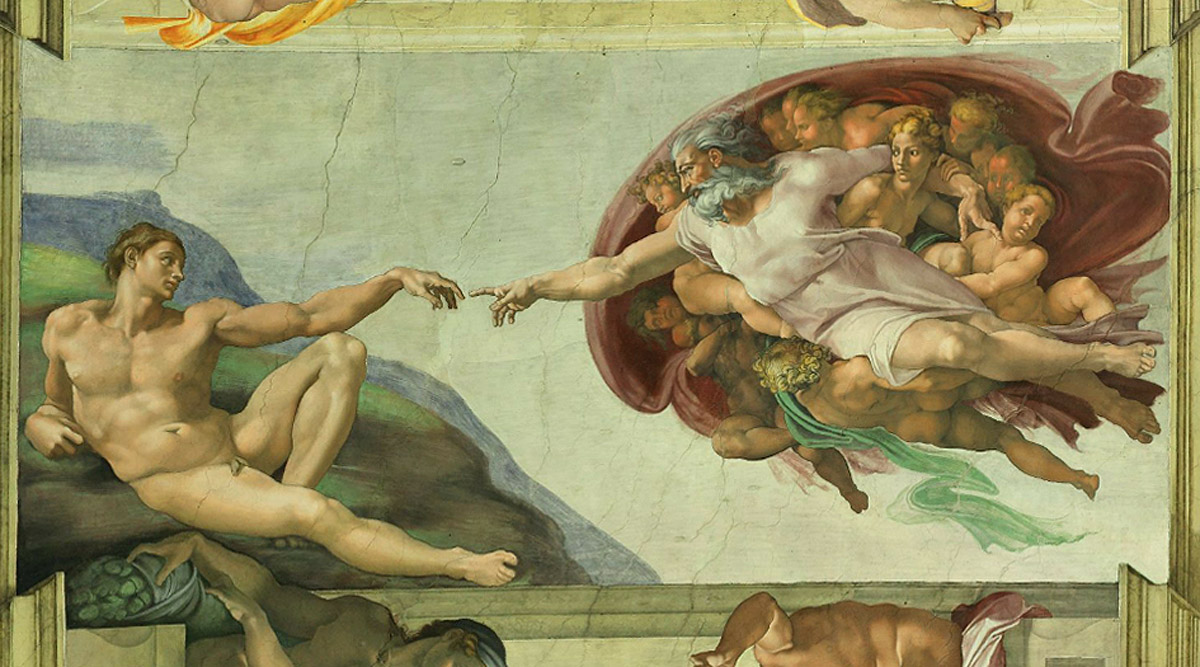 |
|||
| On the ceiling of the Sistine Chapel, Adam is receiving the spark of life from God the Father. | |||
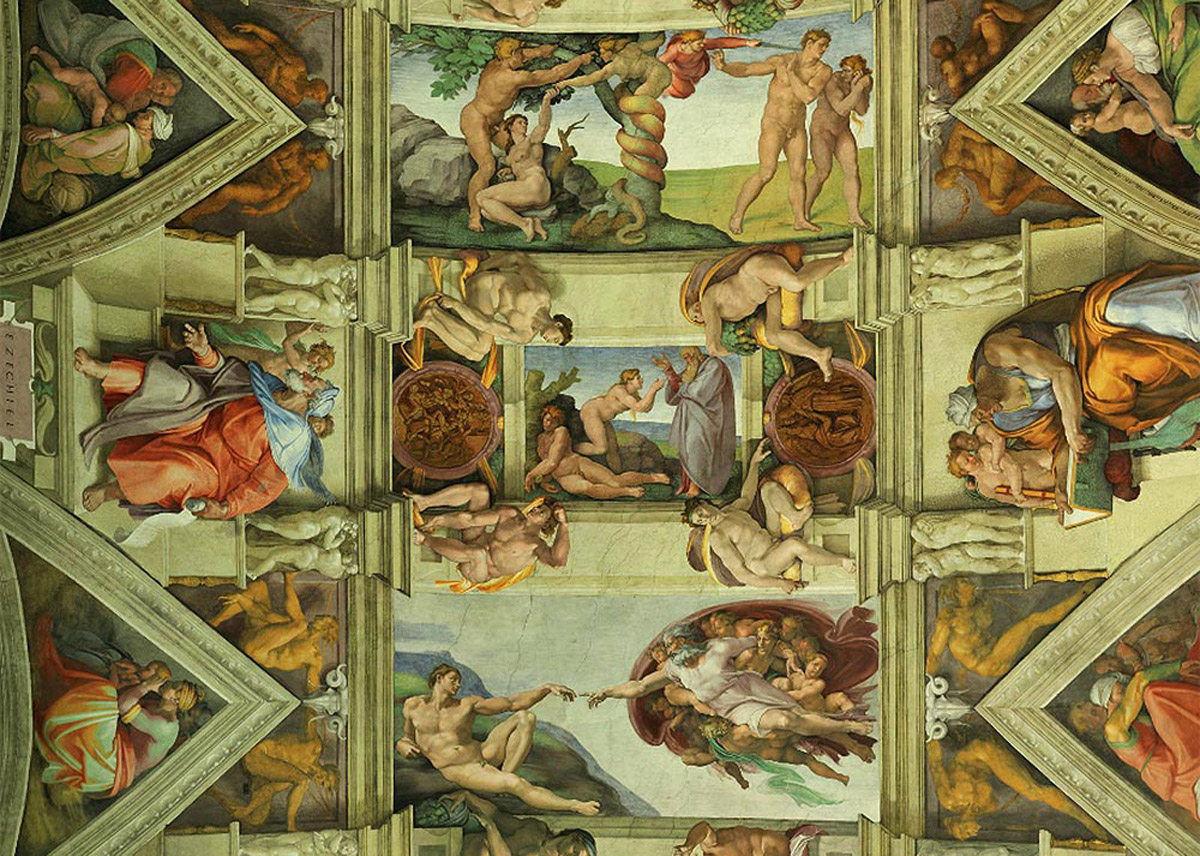 |
|||
| These photos of the Sistine Chapel were taken soon after the paintings had been carefully cleaned and restored.
I was amazed at the difference in the brightness and vivacity of the colours in contrast to the time when I arrived in Europe in the early 1960s, and saw the actual paintings for the very first time. They were then dull and dirty with age. They are now bursting with life. |
|||
 |
||||
| This painting of "The Deposition of Christ" by Caravaggio is in the Vatican Museum. It is a quintessential work of the Baroque, or Counter-Reformation era. | ||||
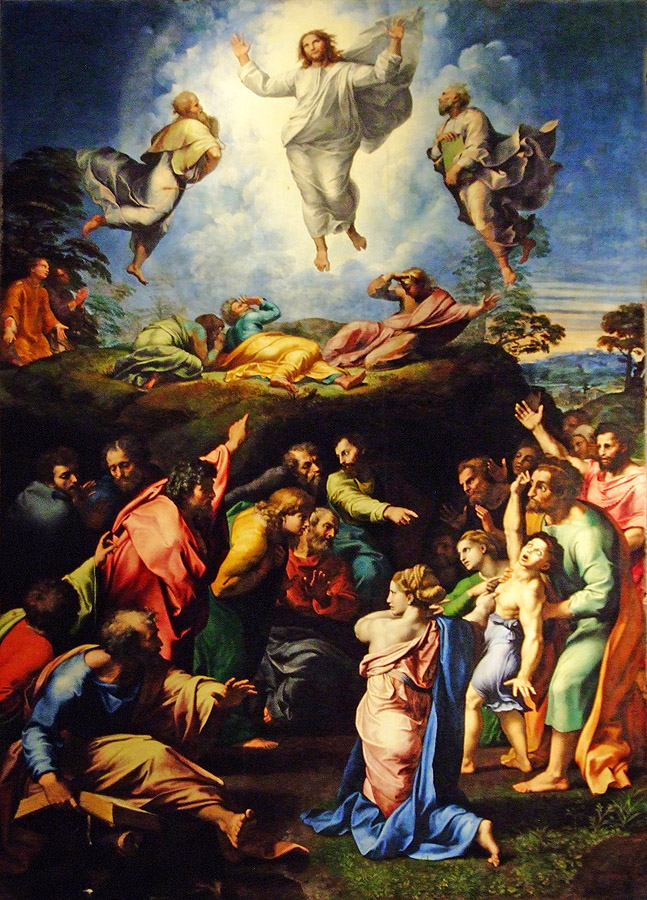 |
||||
| This is the "Transfiguration" by Raphael. It was his very last painting and it may have been given some final touches by his pupil, Giulio Romano.
If Caravaggio is considered the quintessential Baroque artist, I strongly suspect that Raphael's Transfiguration was the painting which was the very beginning of the Baroque style in painting. My hypothesis is that Raphael fused two great ideas which he borrowed from Michelangelo and Leonardo da Vinci. From Michelangelo he took the dynamism of controposto, and from Leonardo he took the idea of "sfumato", which in Italian is derived from "fumo" or smoke. This became known as chiaroscuro. The lower half of the Transfiguration is pure Baroque. There is a story that Raphael bribed a nightwatchman to let him sneak into the Sistine Chapel to see what the highly secretive Michelangelo was painting. Legend has it that Michelangelo got rid of his assistants and worked on the Sistine frescoes on his own, which would have been a very laborious thing to do, given the nature of fresco painting. In those days, artists jealously guarded their ideas and techniques from their rivals. Incidentally, there is a copy of the Transfiguration in Saint Peter's Basilica. |
||||
 |
||
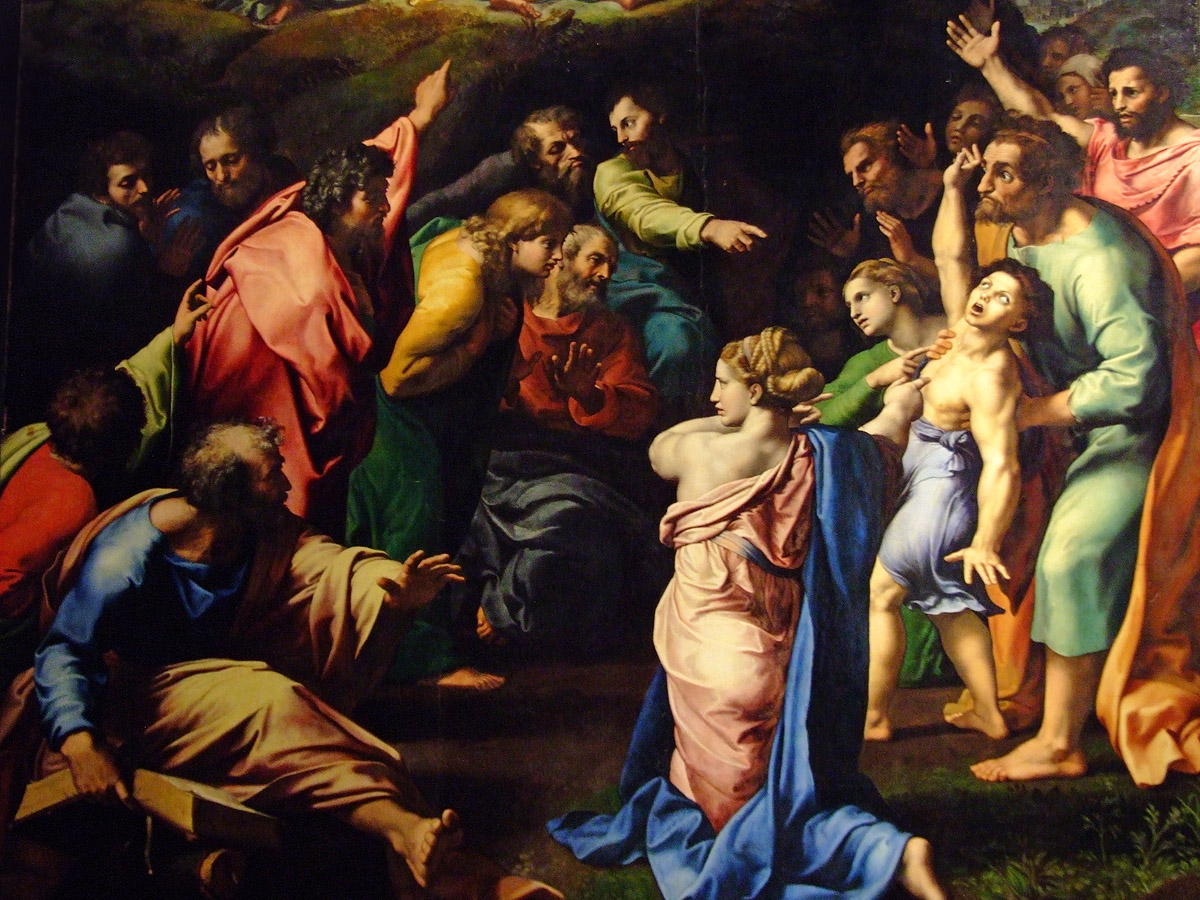 |
|||
| The bottom half of Raphael's Transfiguration. The cross-eyed boy gesticulating on the right of the painting has pictorial echoes later in works by Caravaggio and other Baroque painters. | |||
 |
|||
| A musical angel. | |||
 |
|||
| This angel is playing a lute. | |||
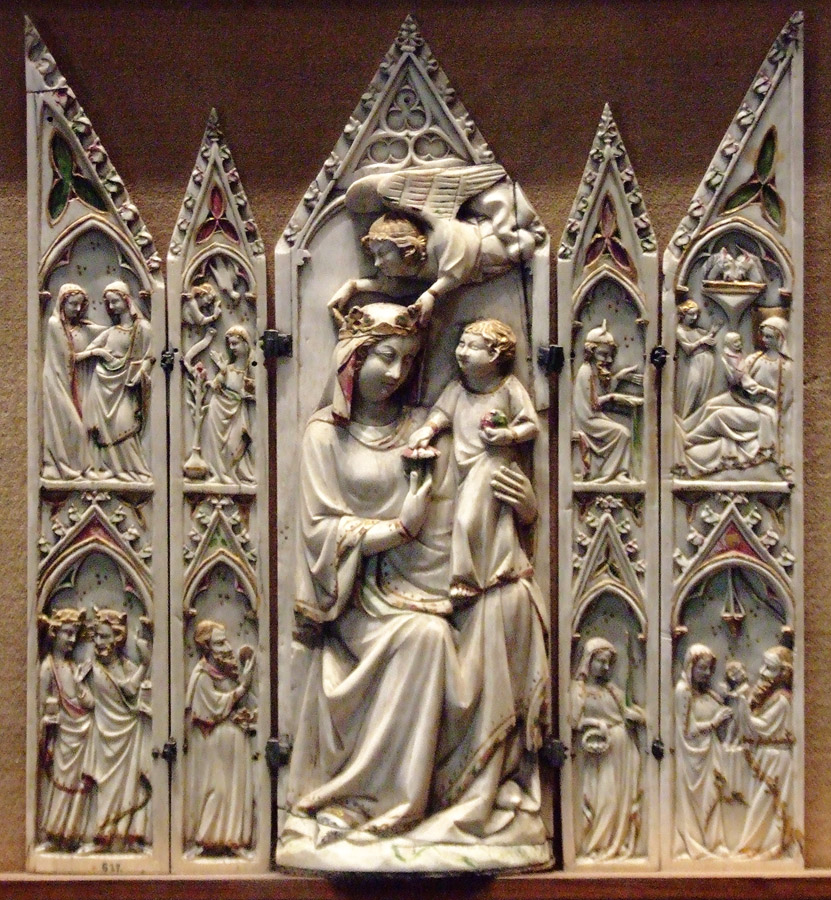 |
||||
| This small sculpture has five panels instead of the usual three as in a triptych. It is called a pentaptych. | ||||
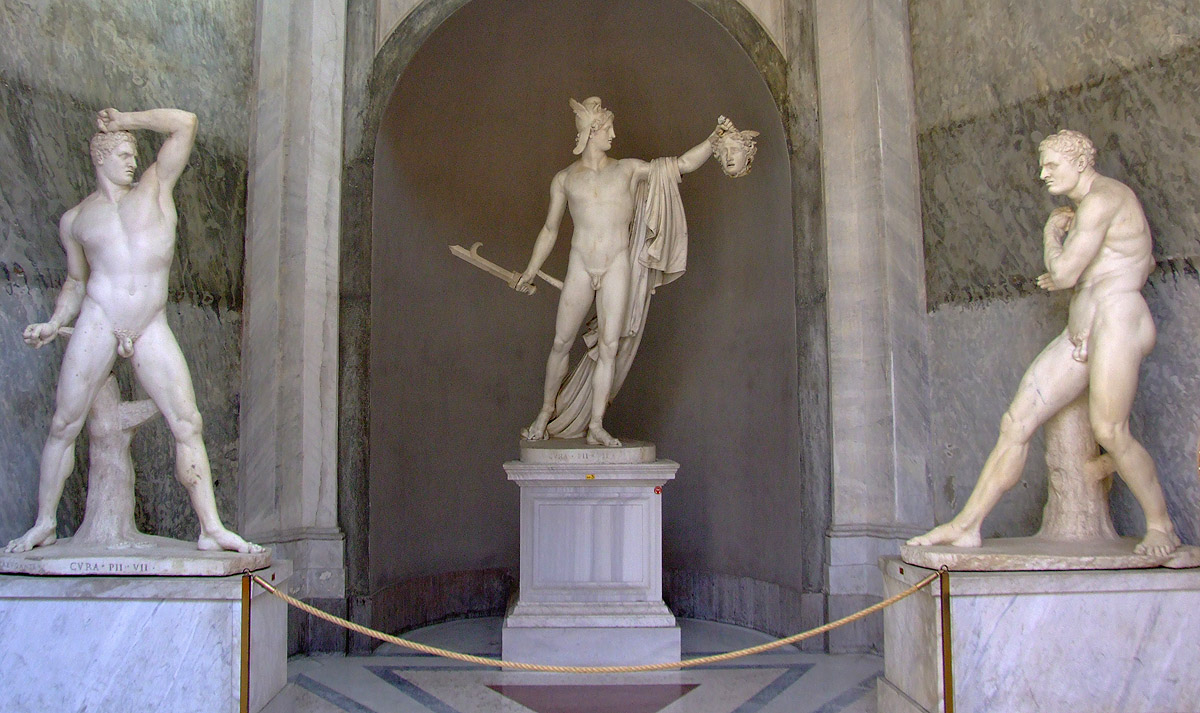 |
|||
| Three Ancient Heroes. | |||
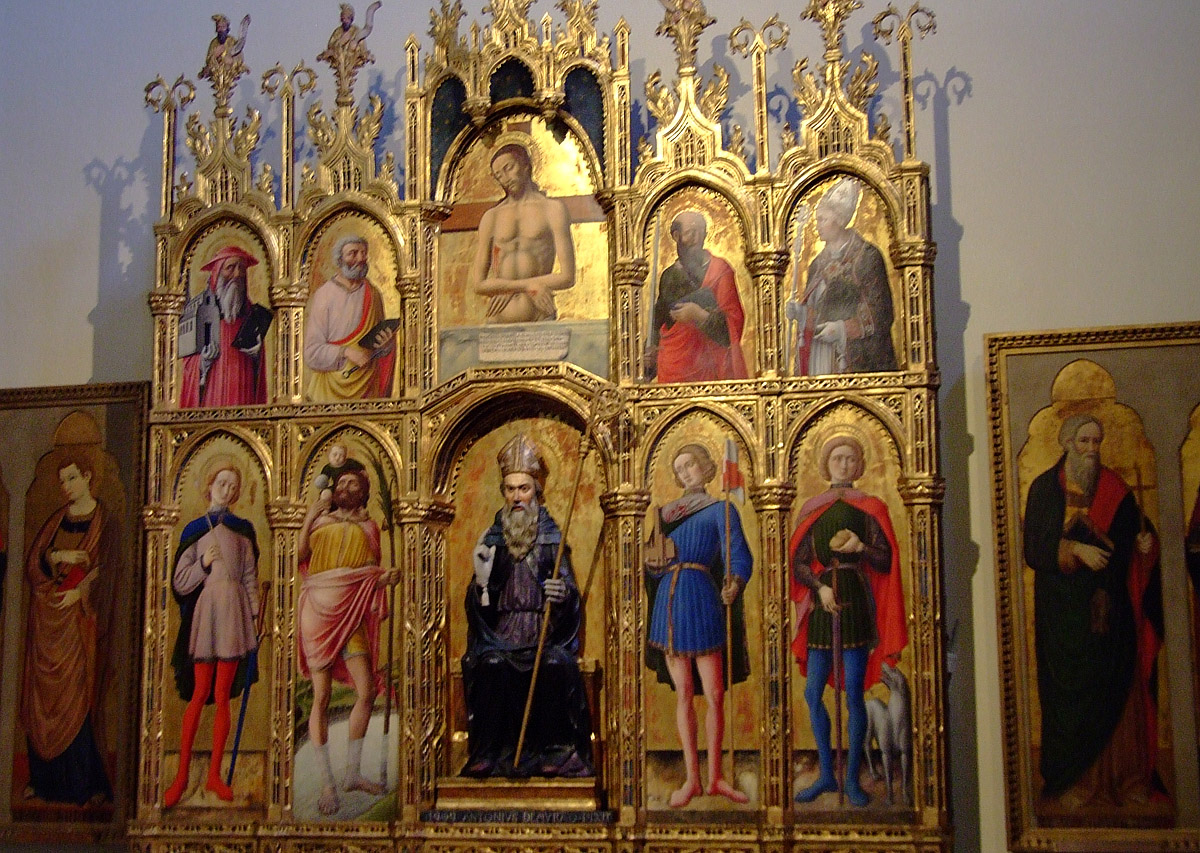 |
|||
| A Gothic polyptych. The central figure on the bottom row is sculpted and painted in bas relief. | |||
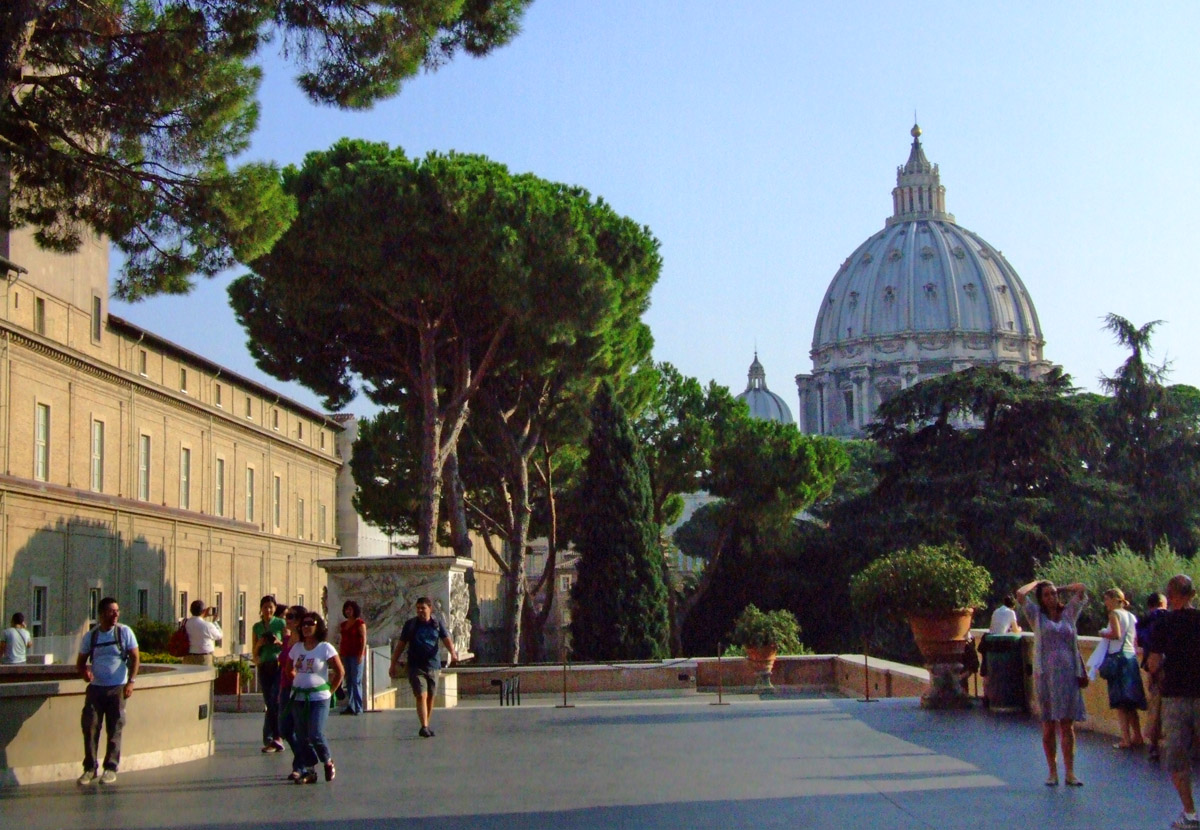 |
|||
| Back in the sunshine, we end our exploration of the West Bank of the River Tiber in one of the garden terraces within the Vatican City. | |||
|
To return to the Paintings section of this website, please CLICK HERE
|
|||